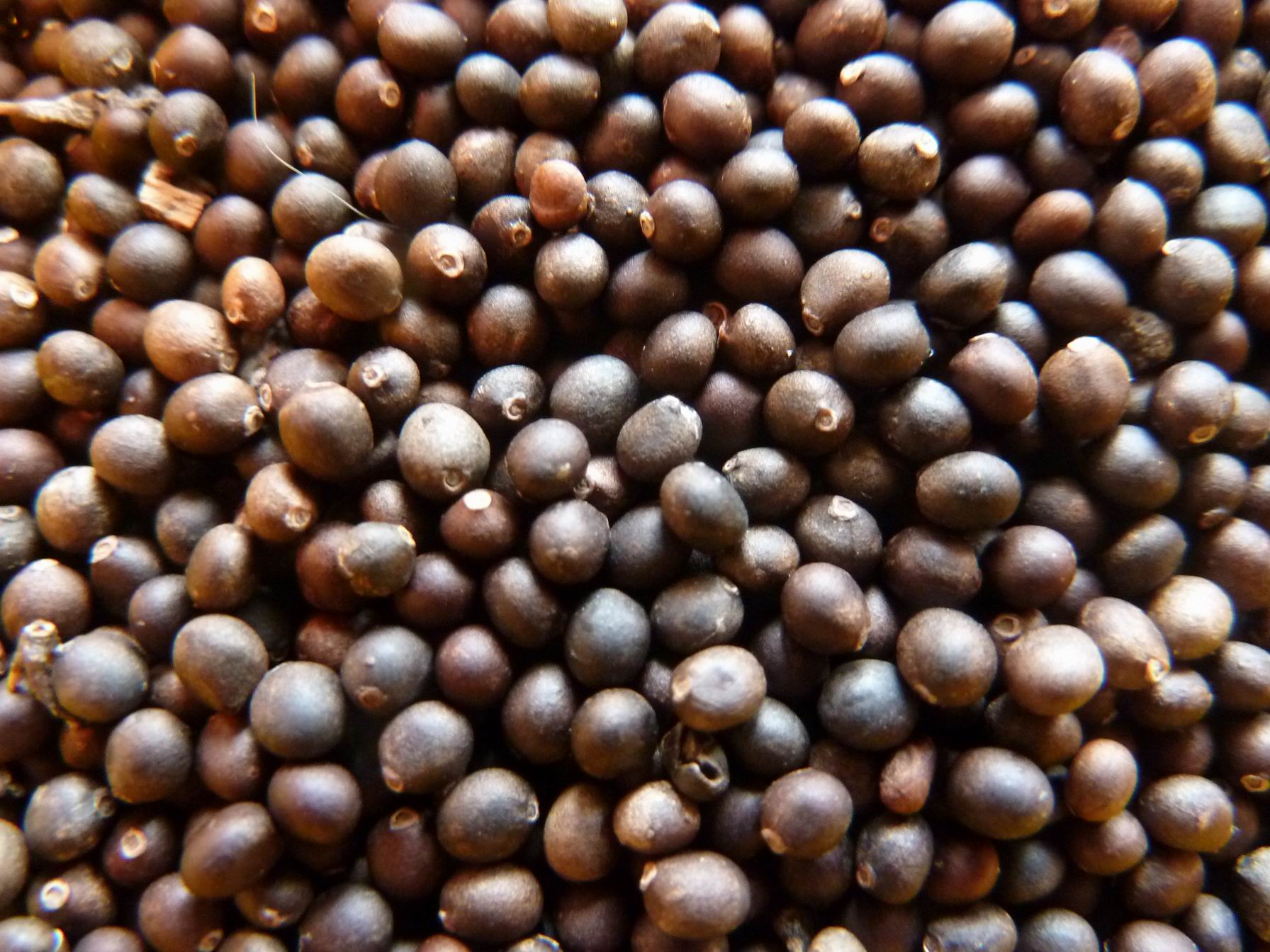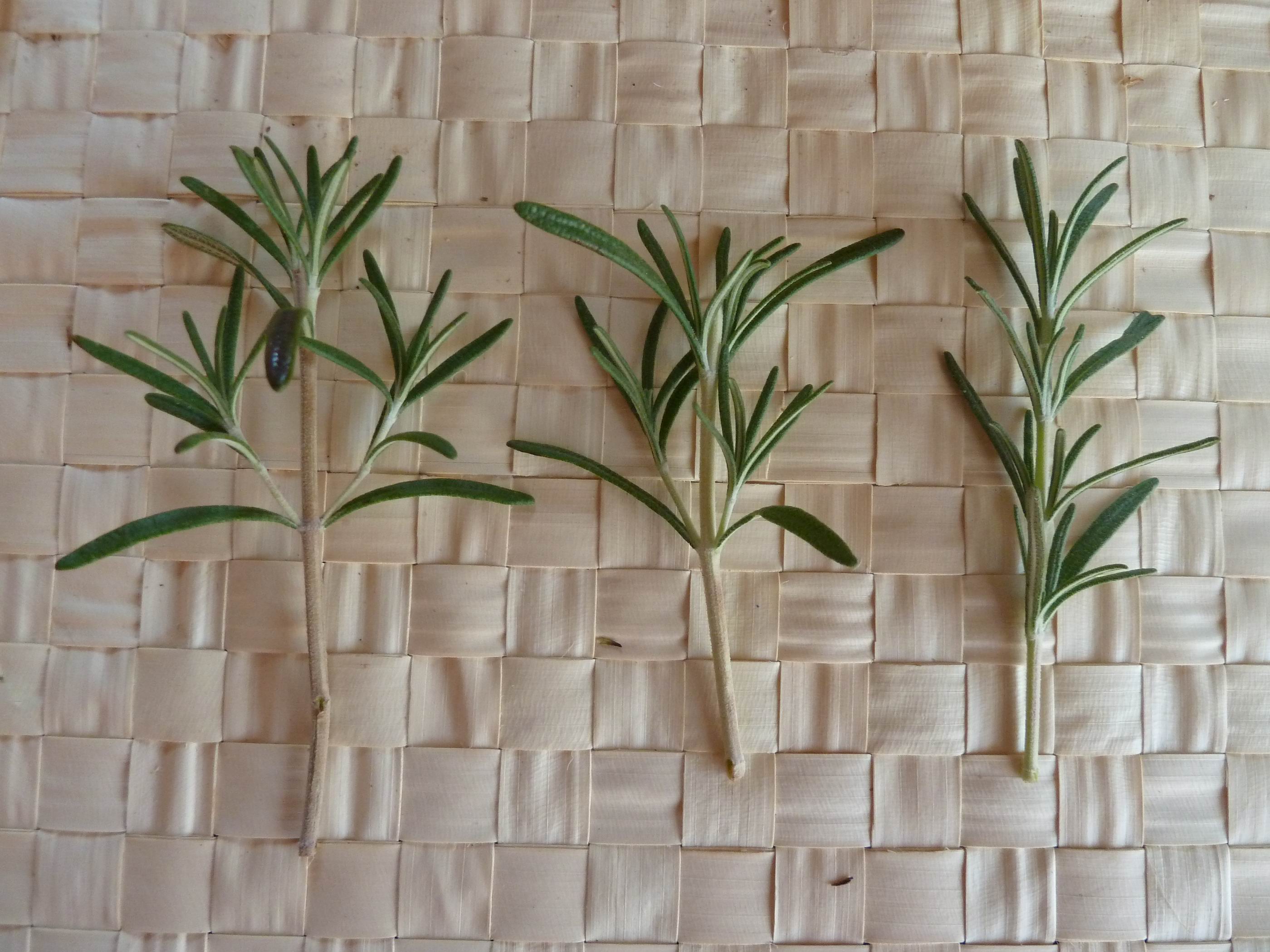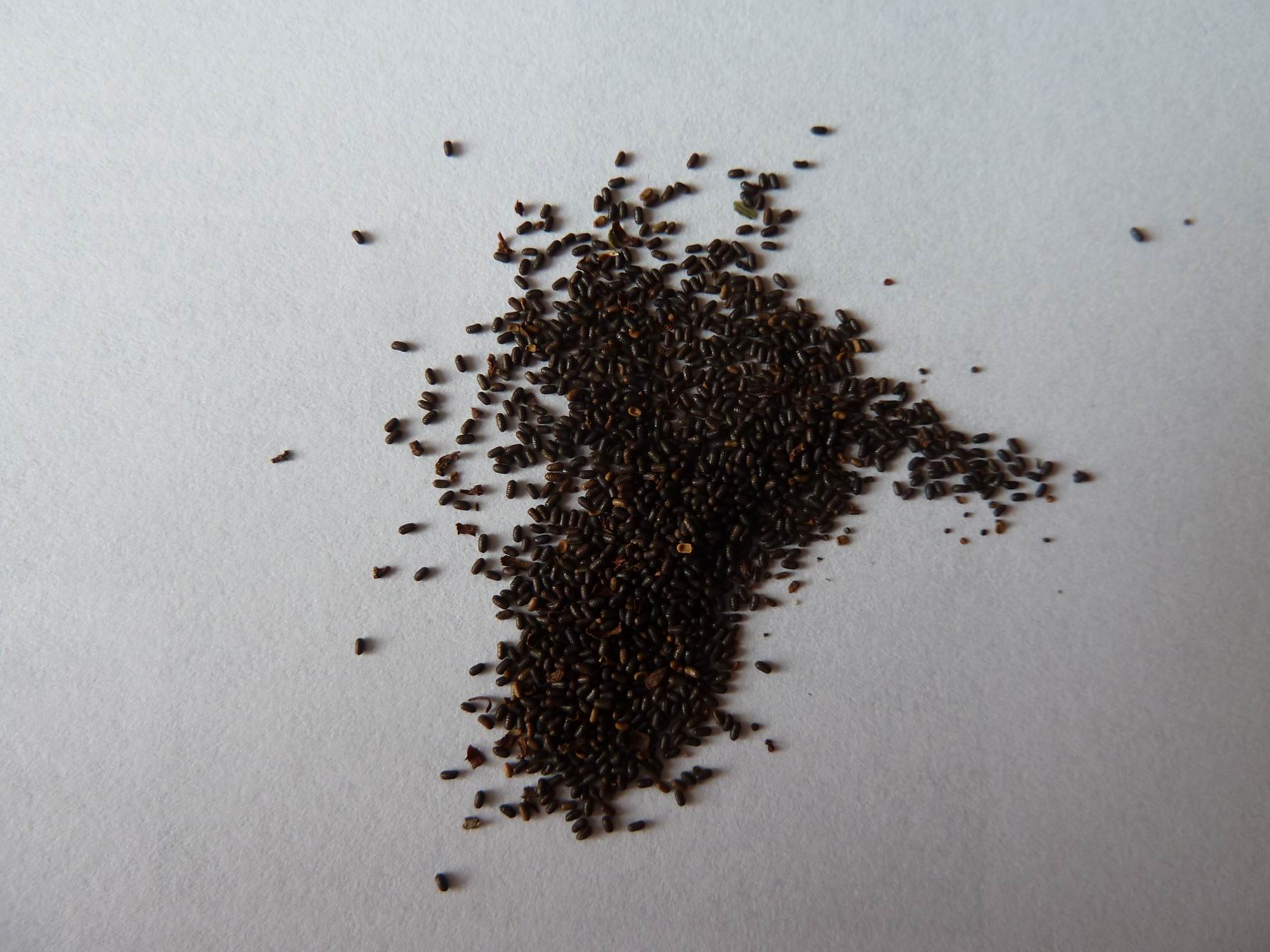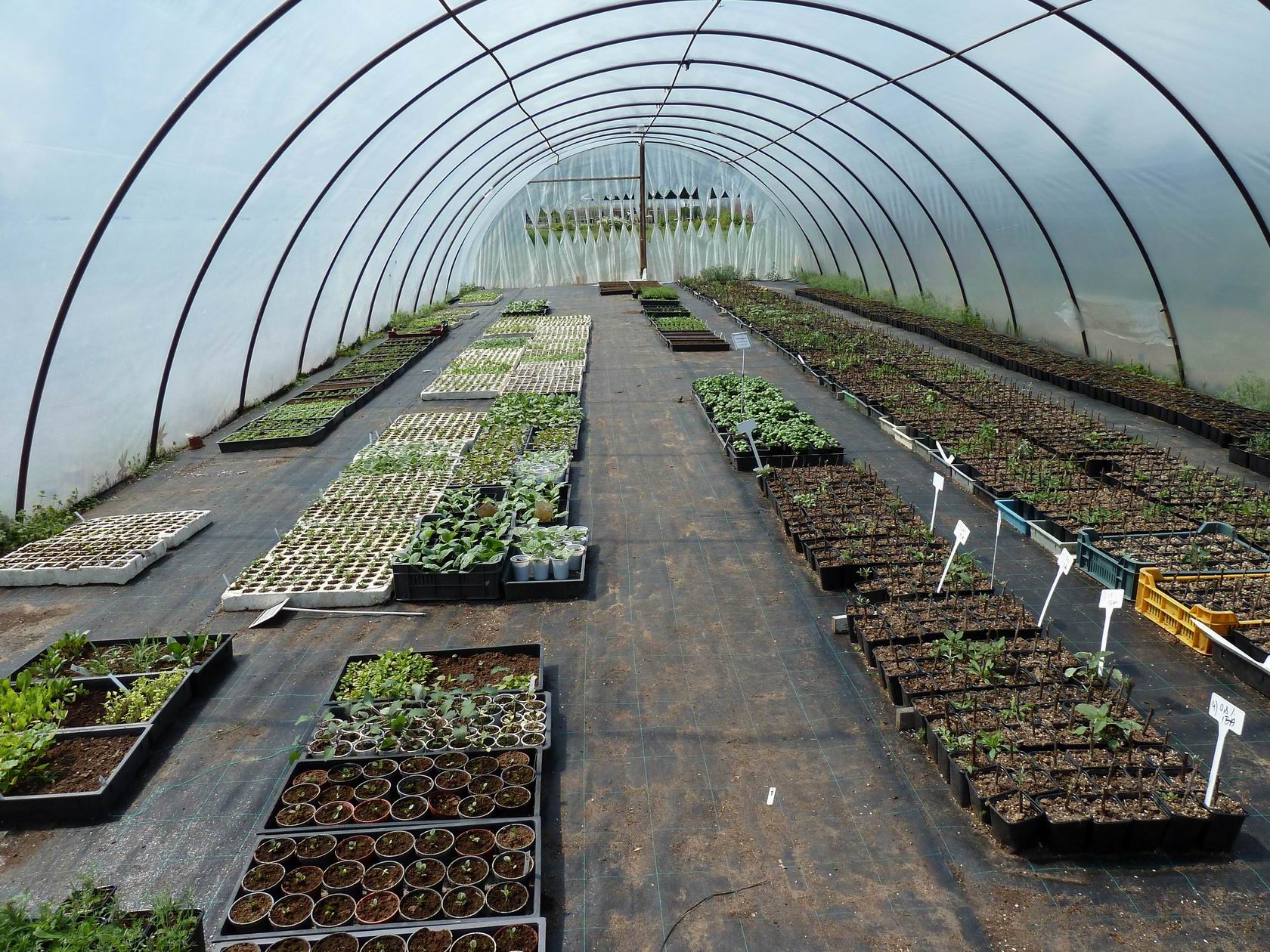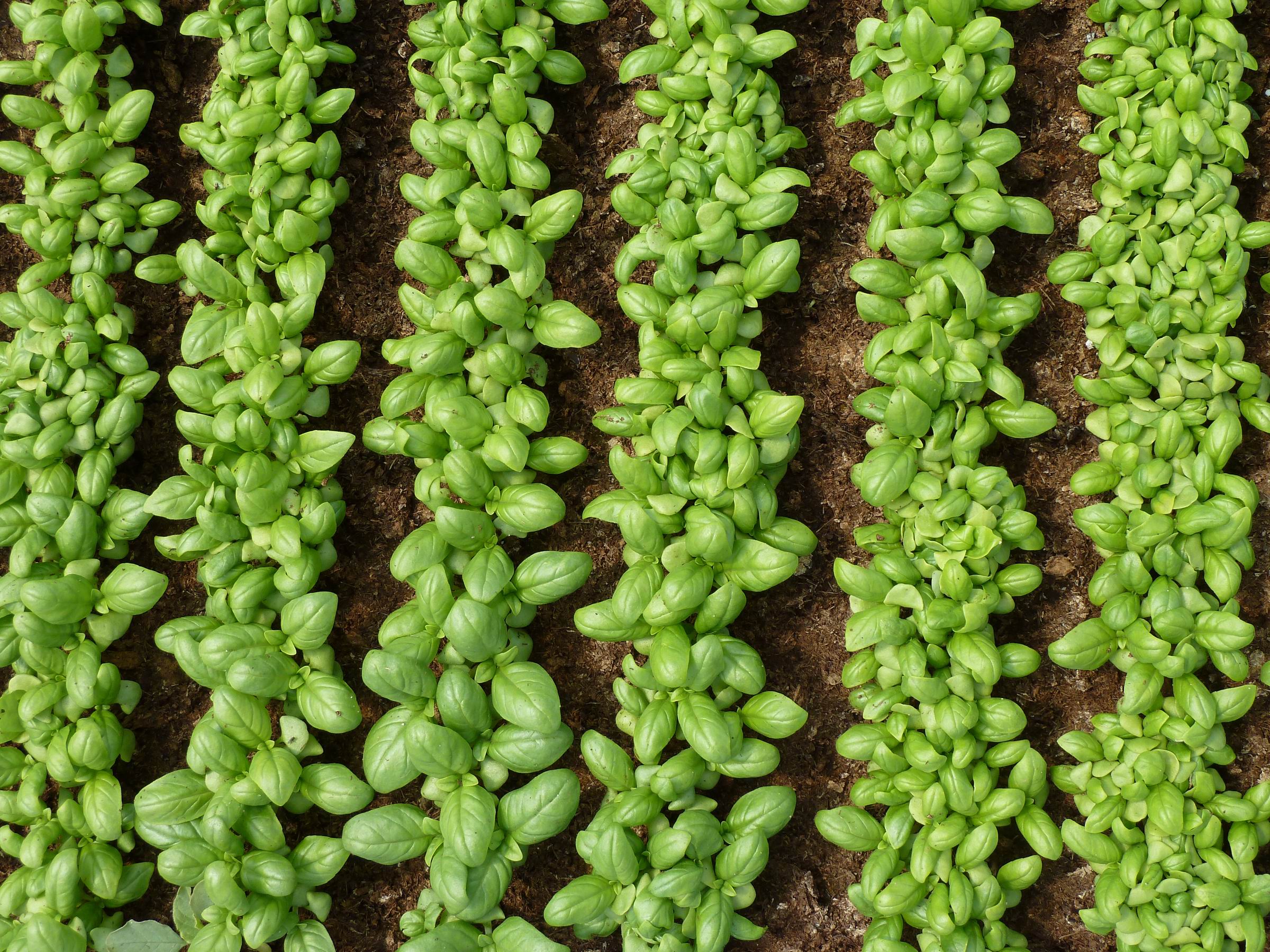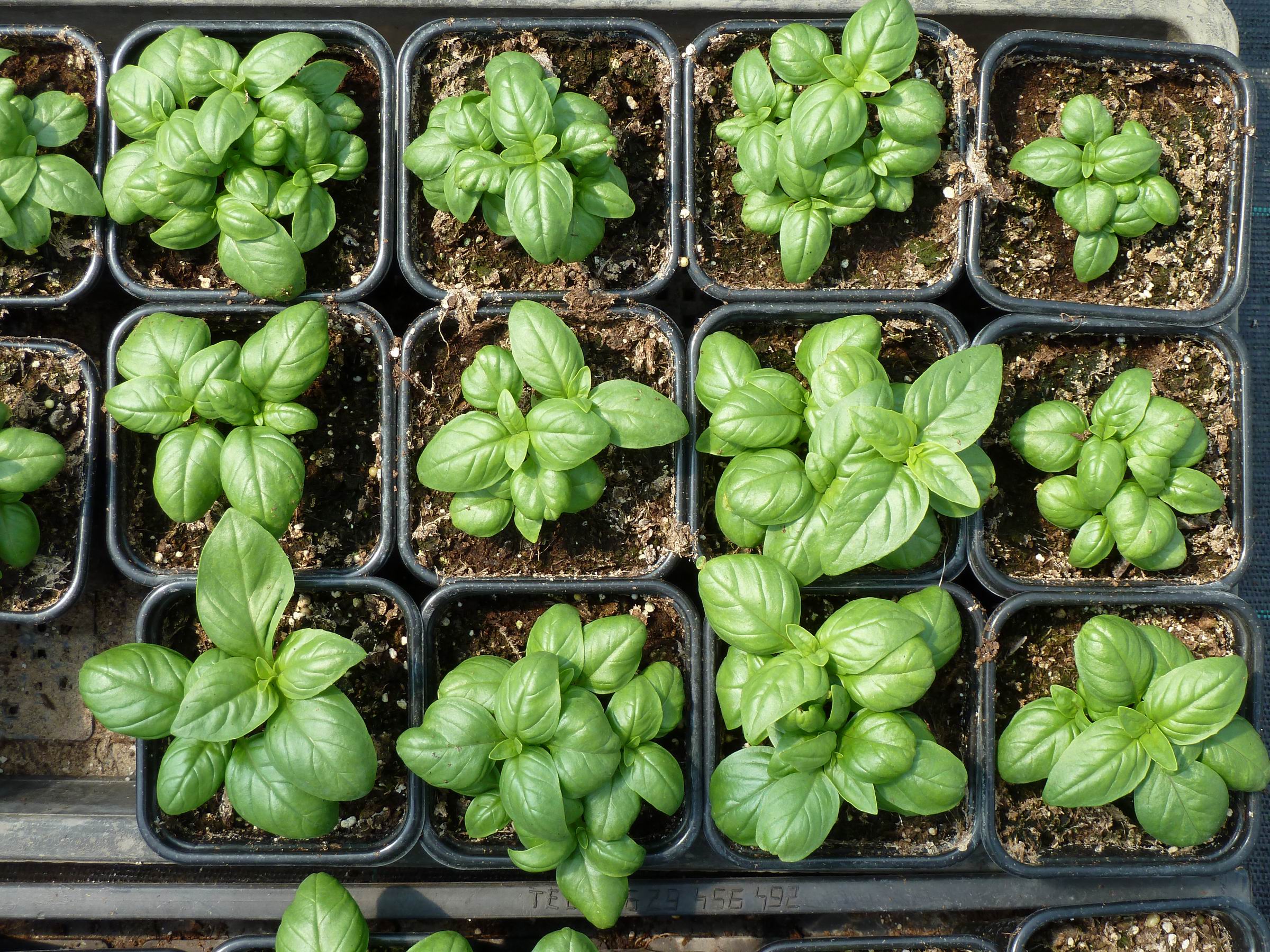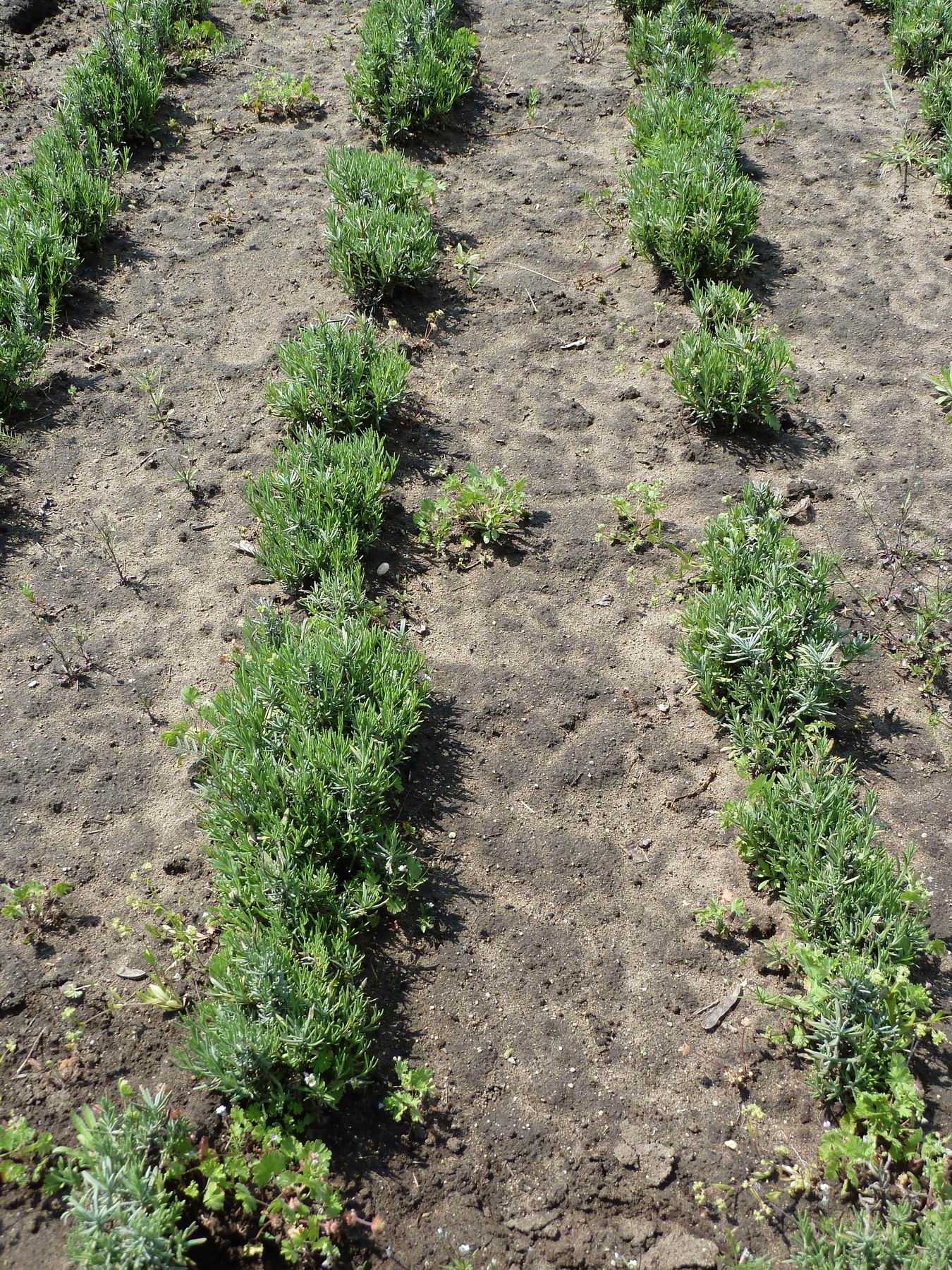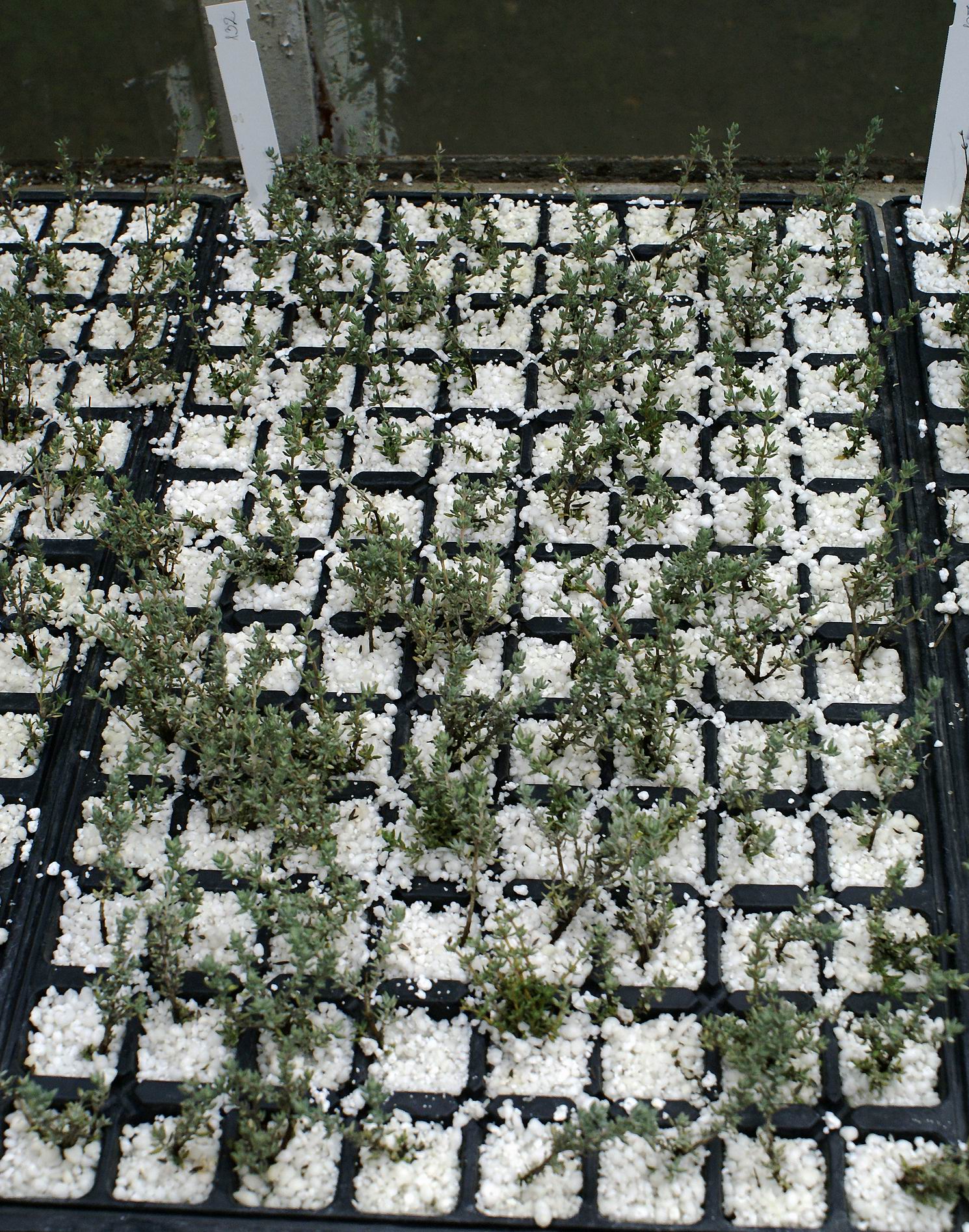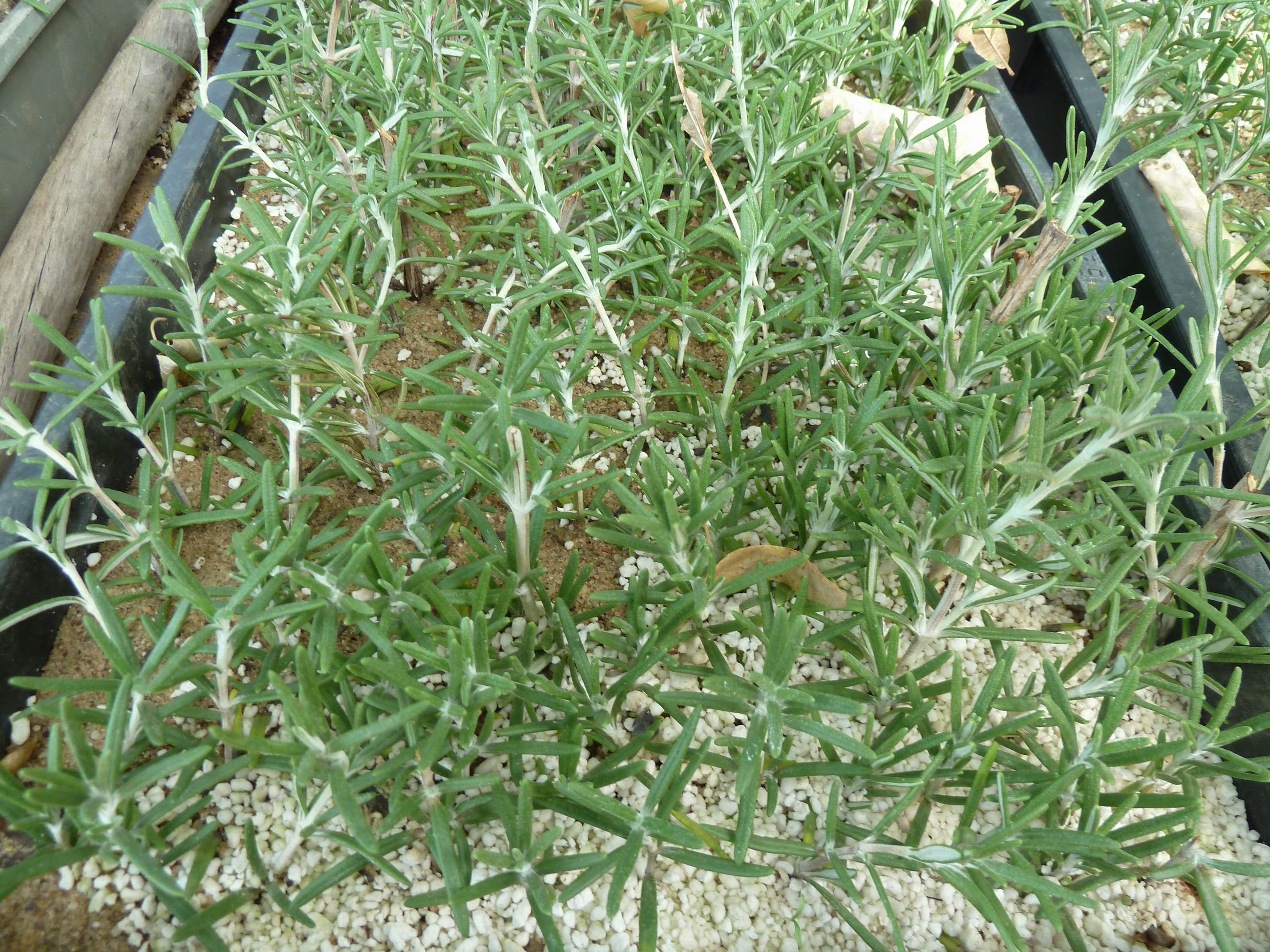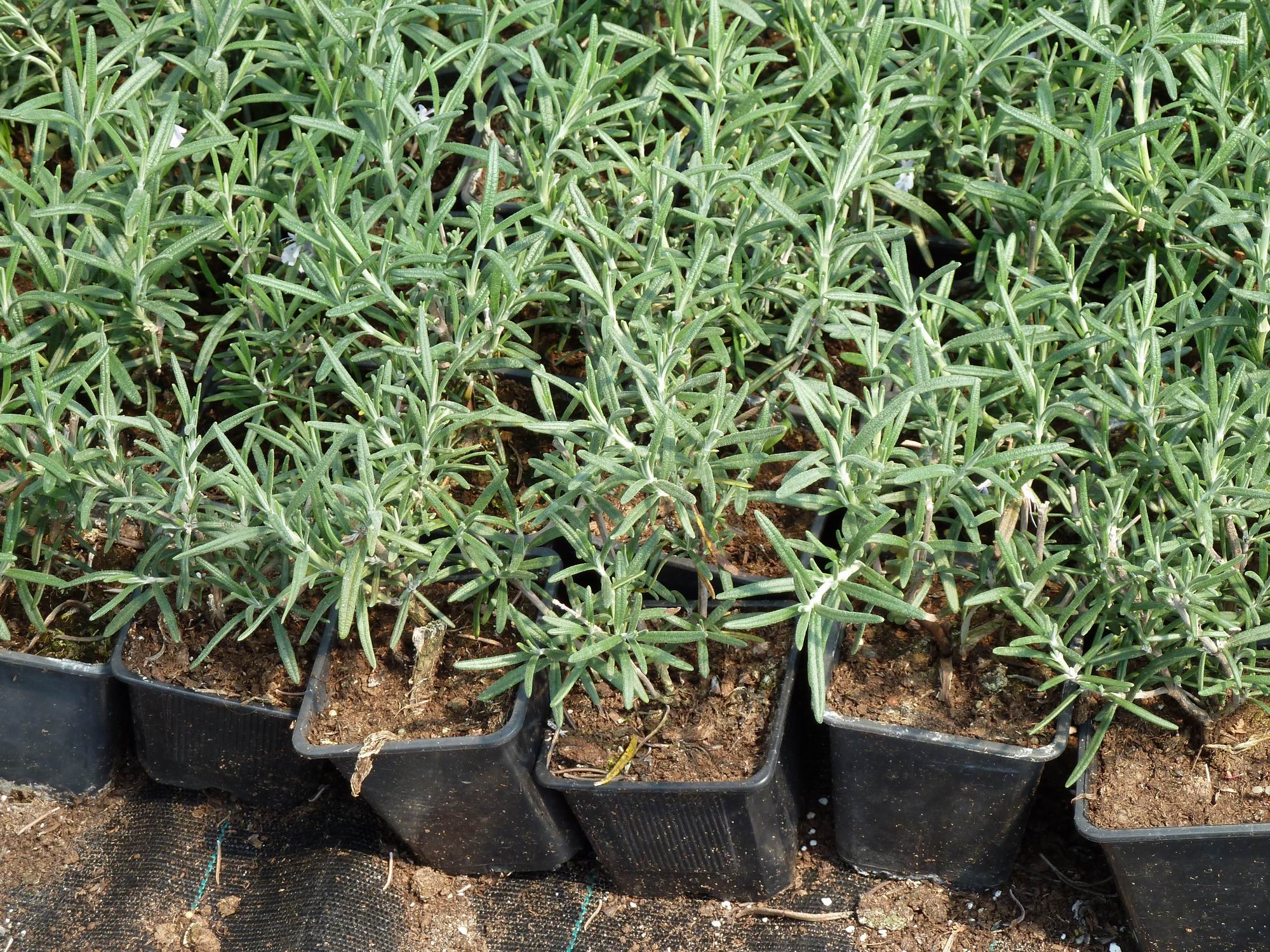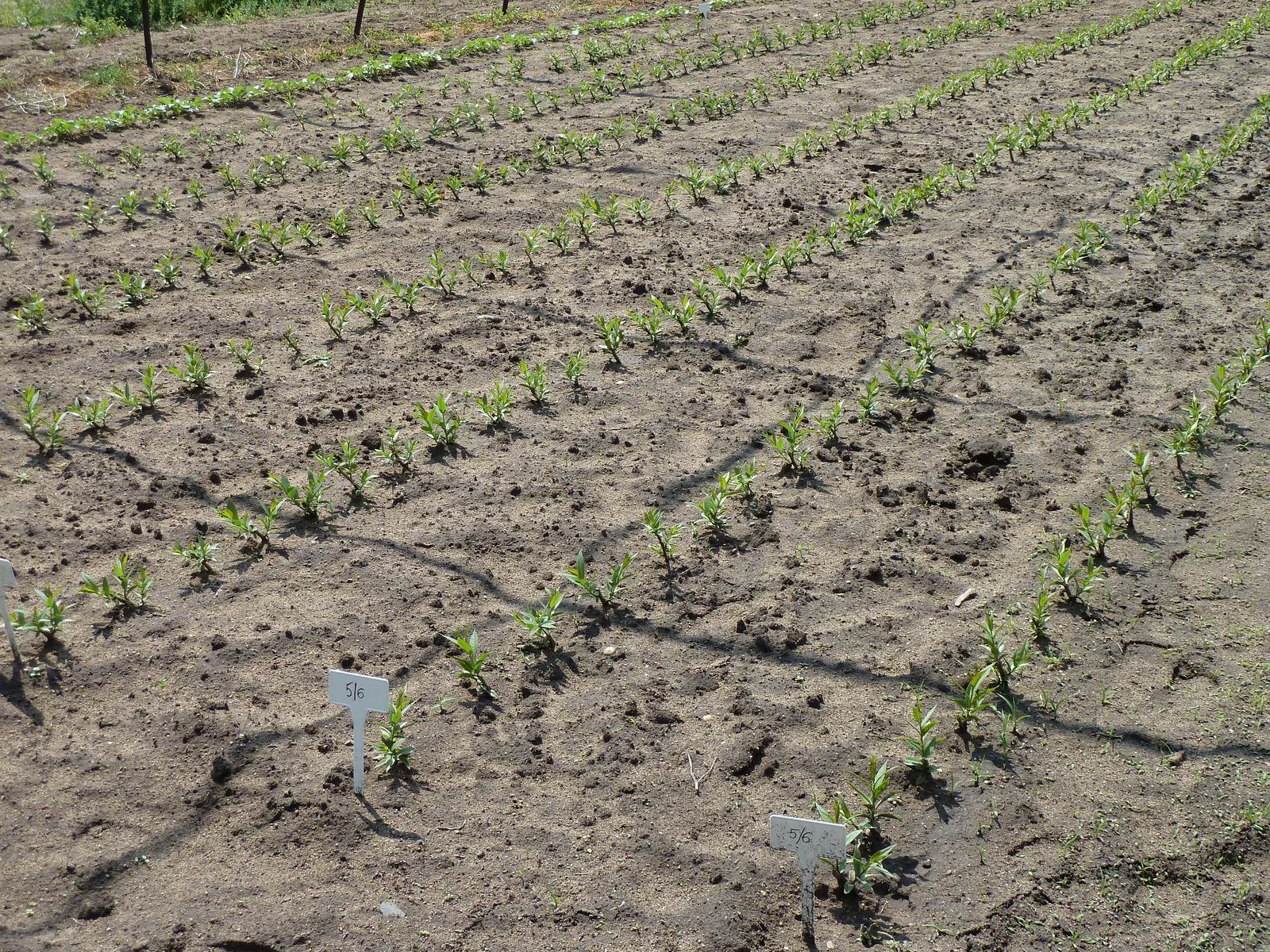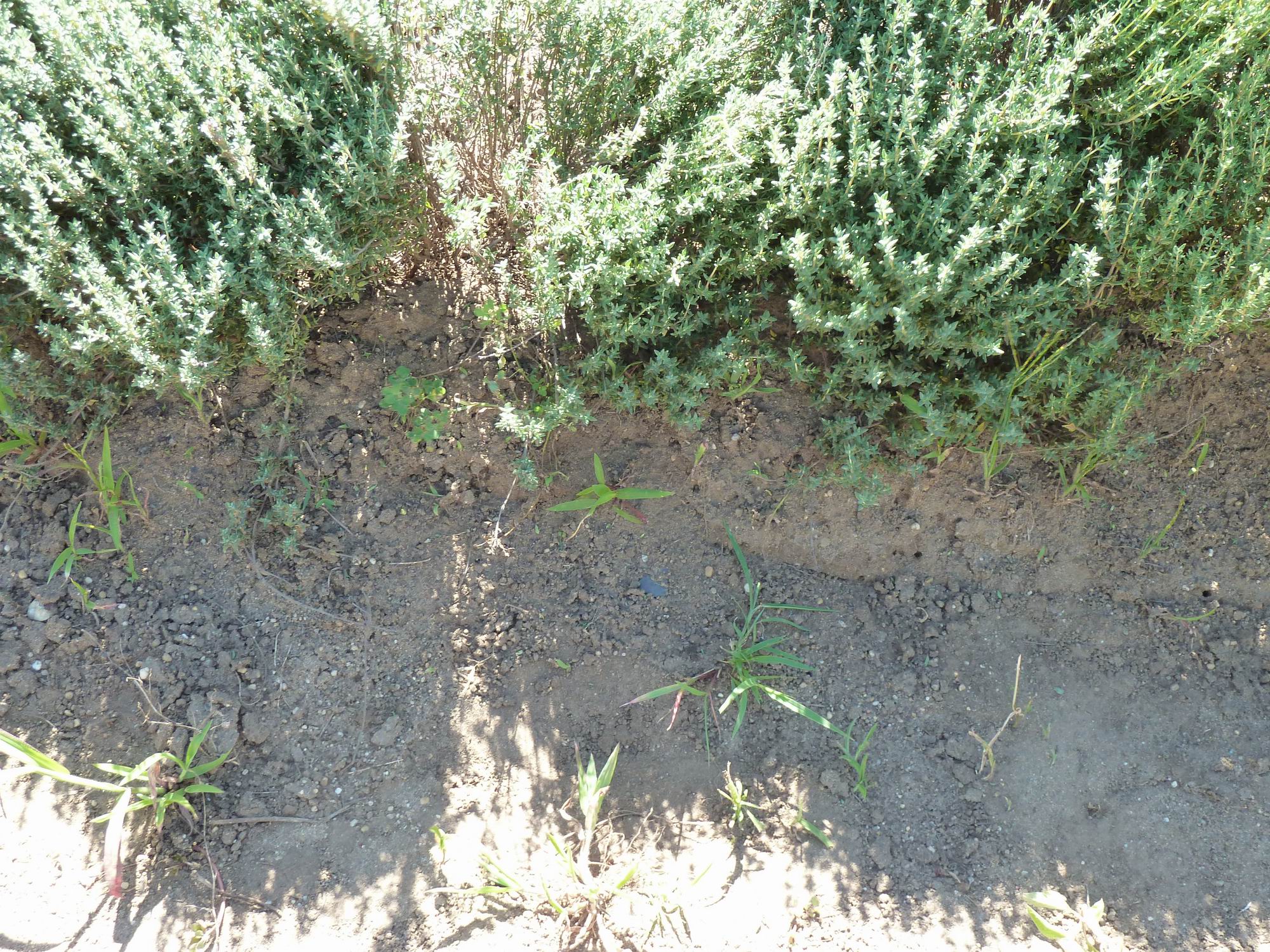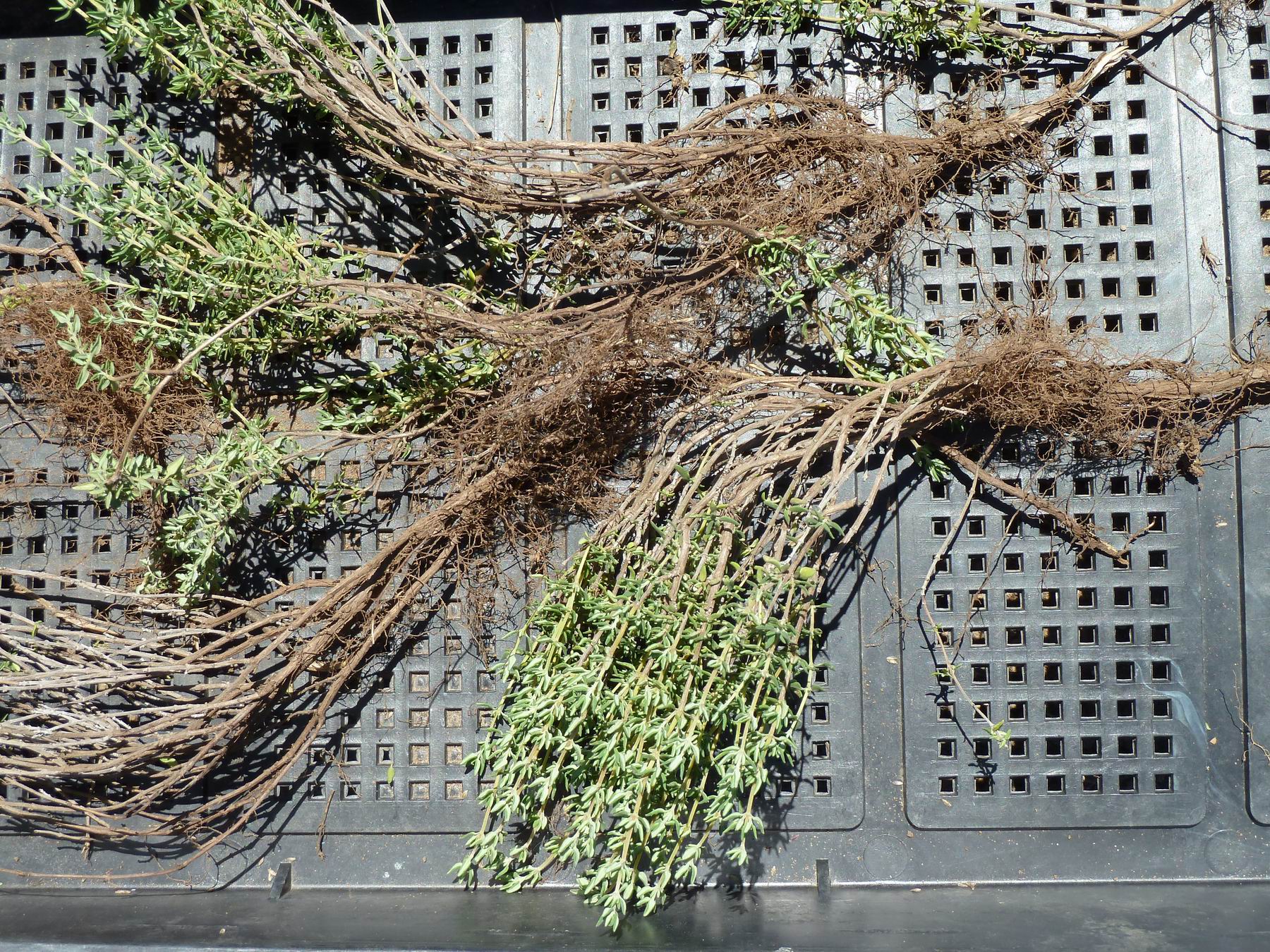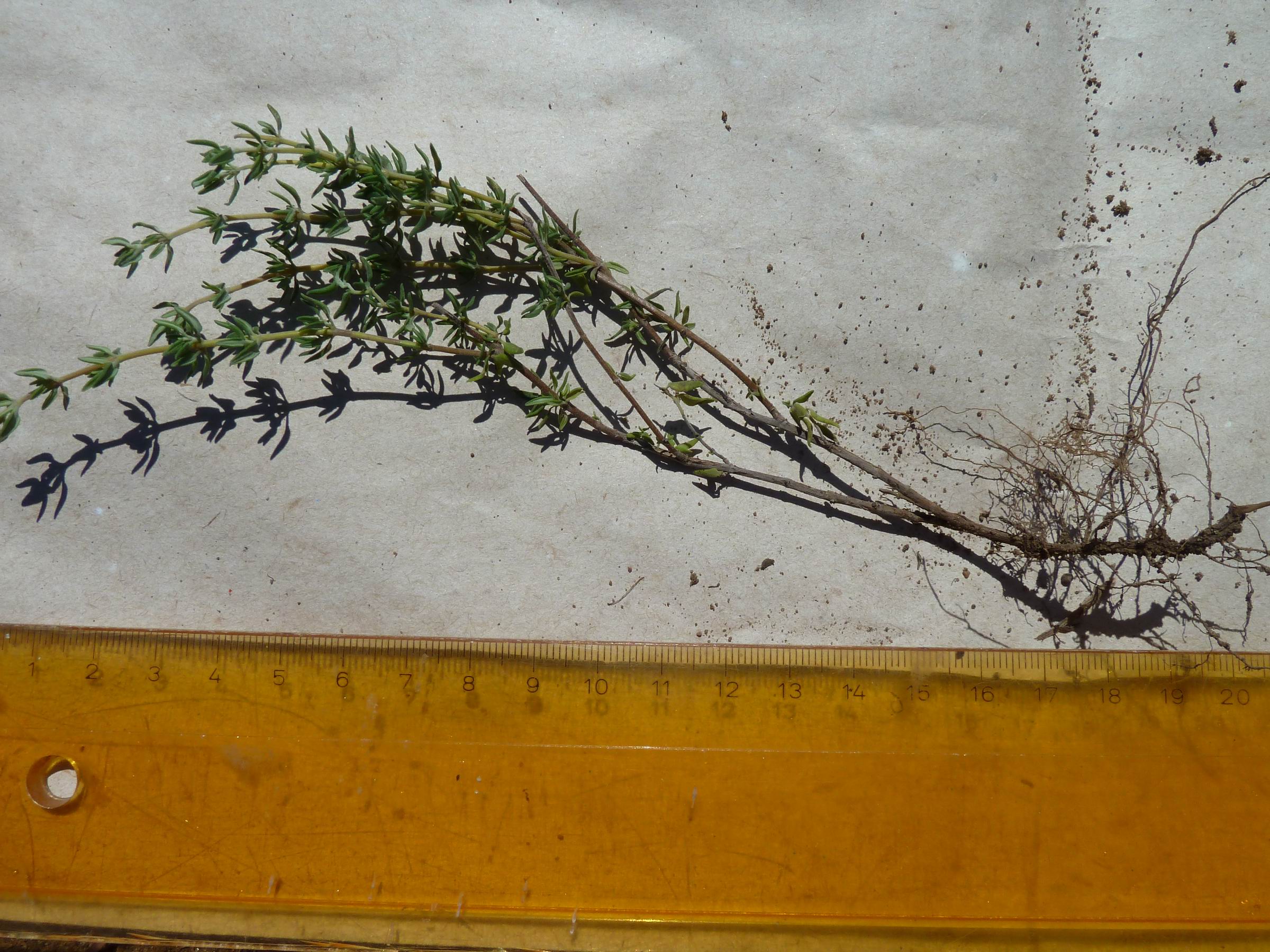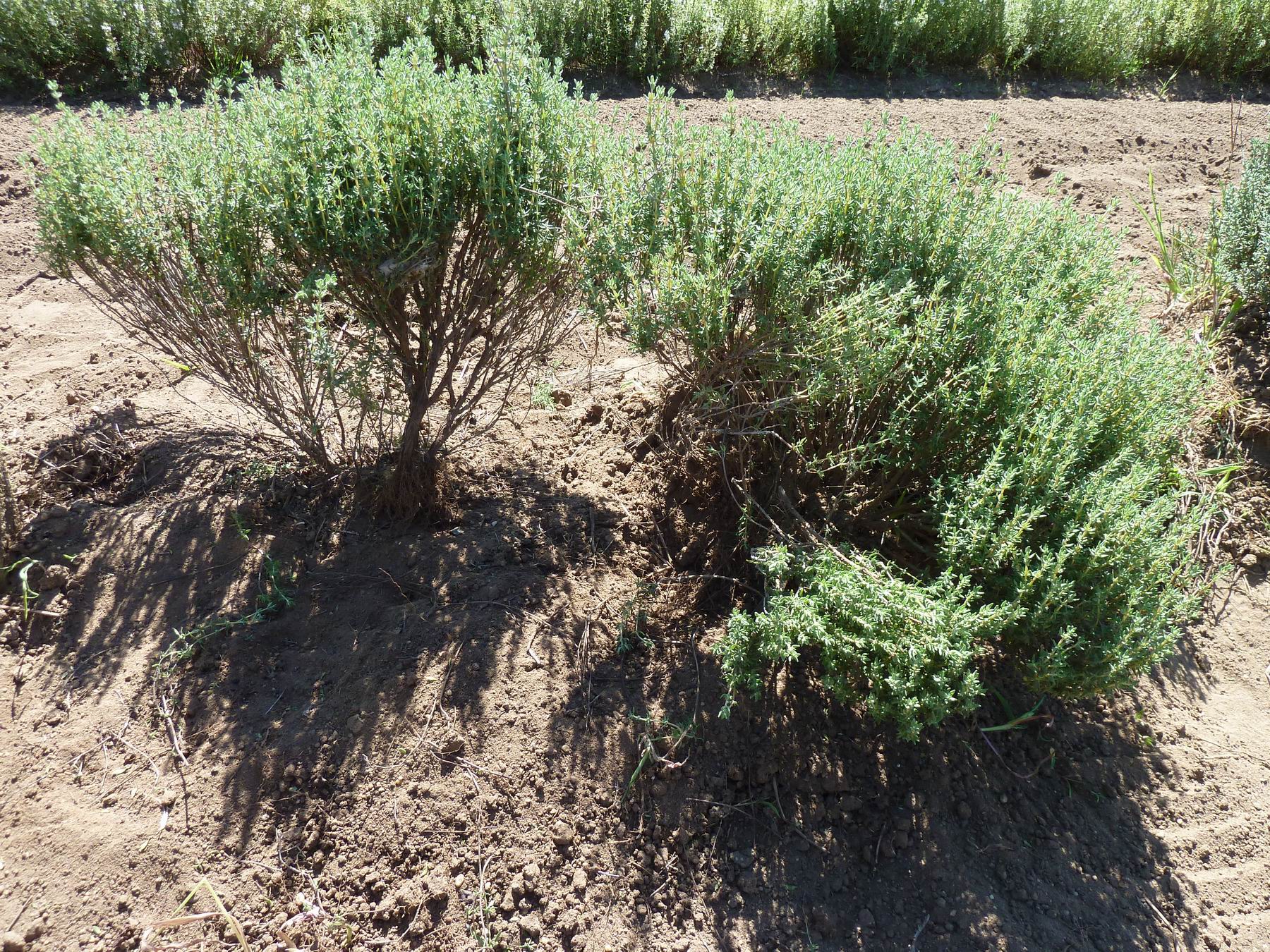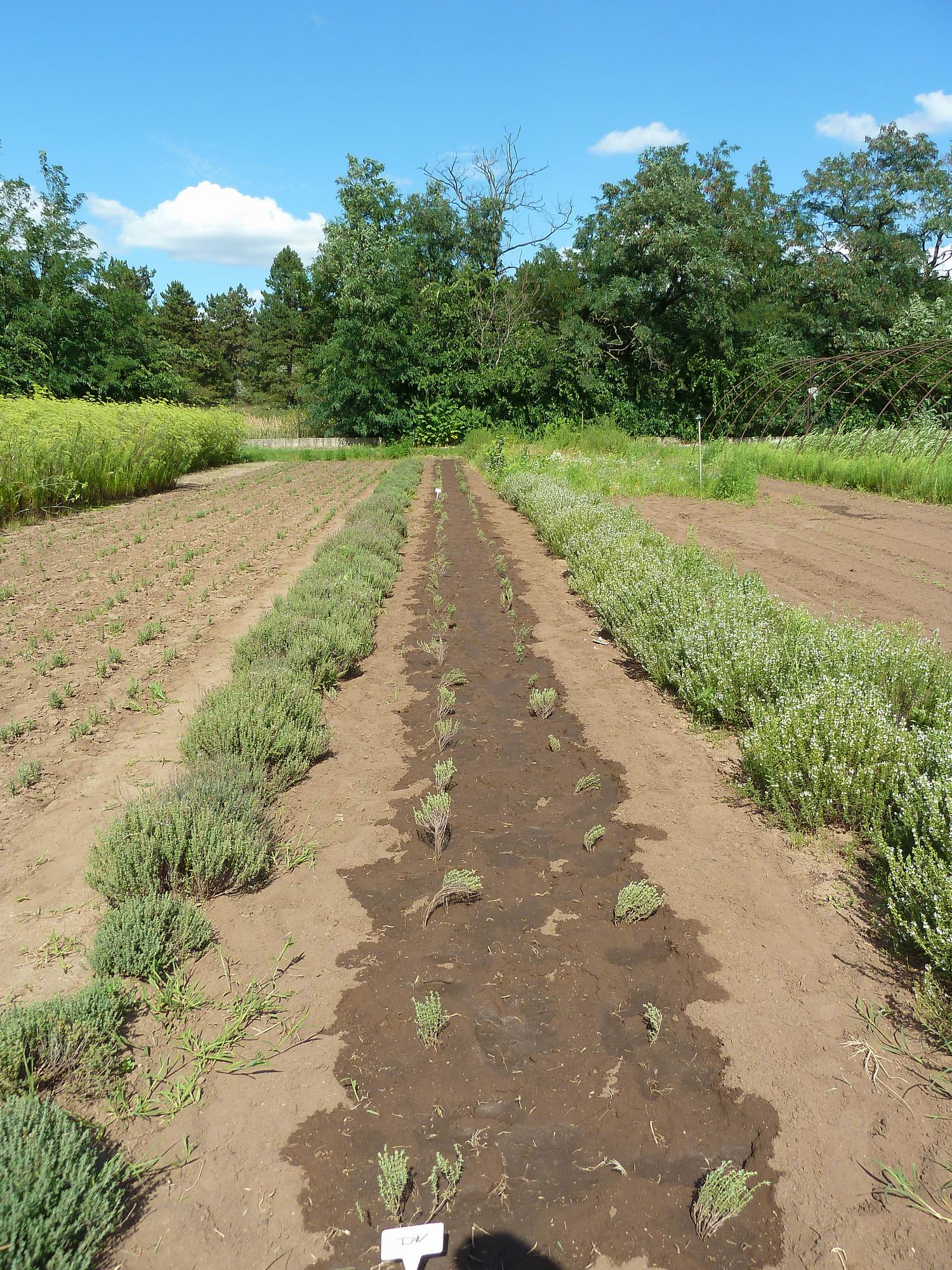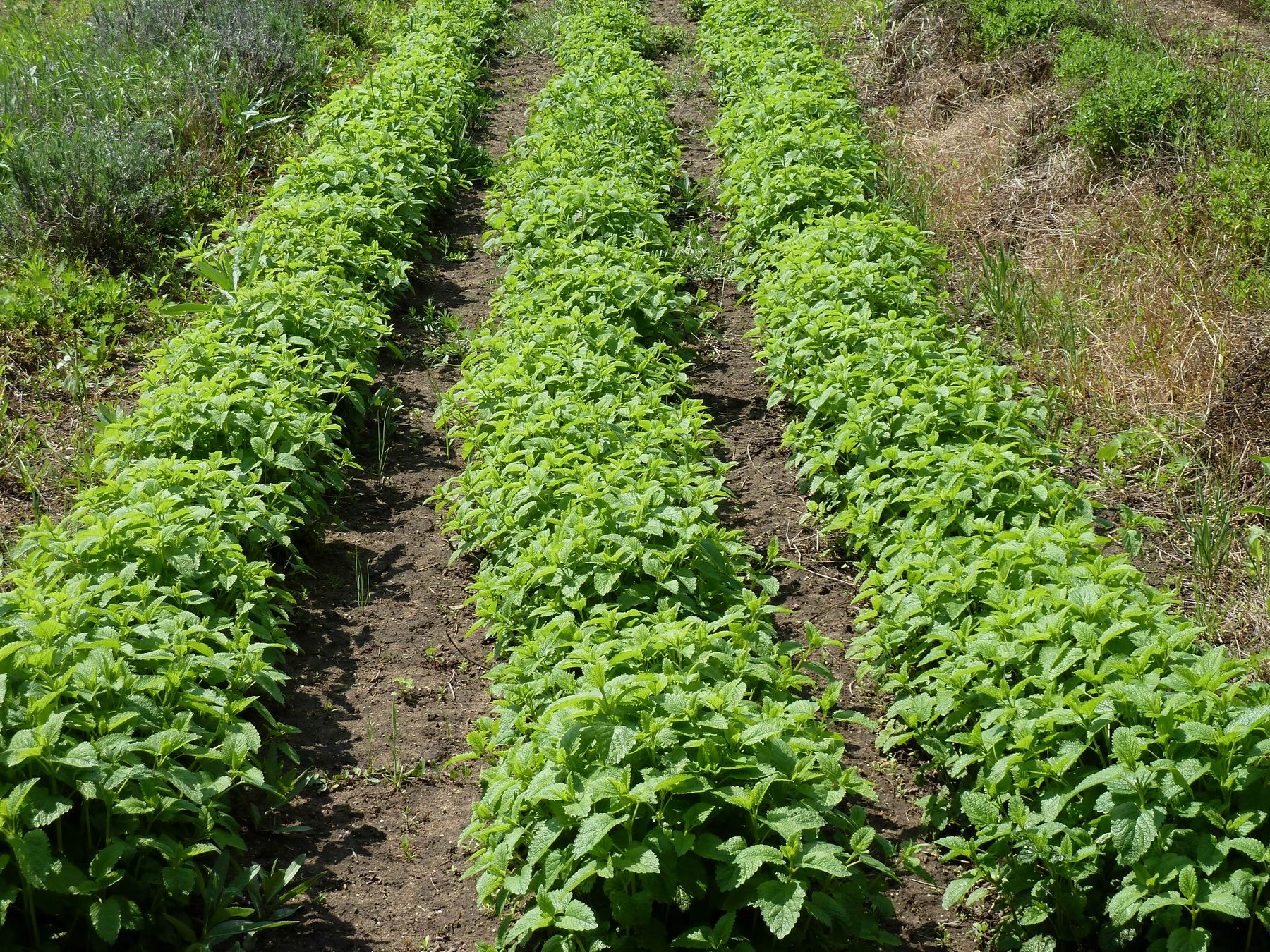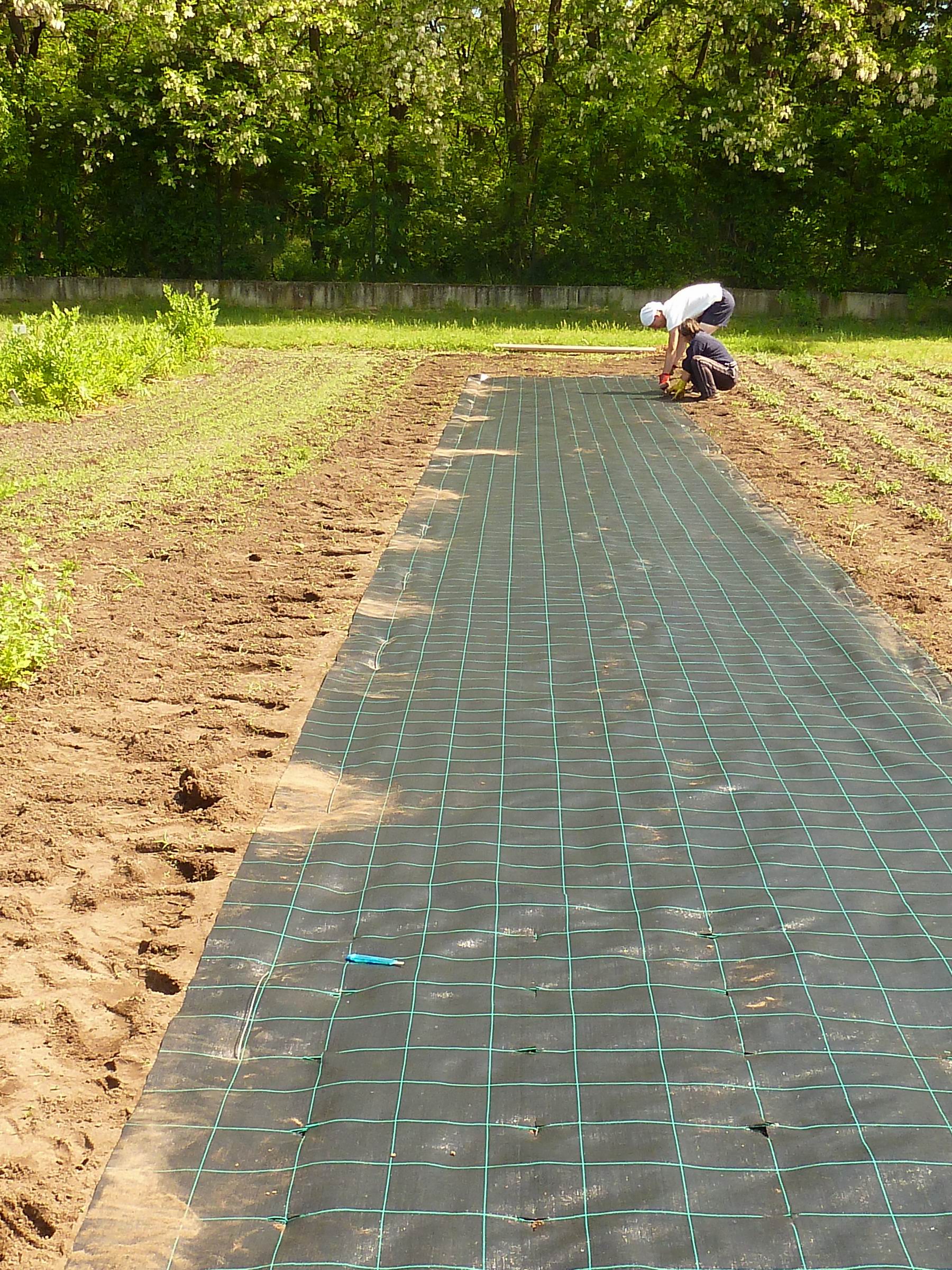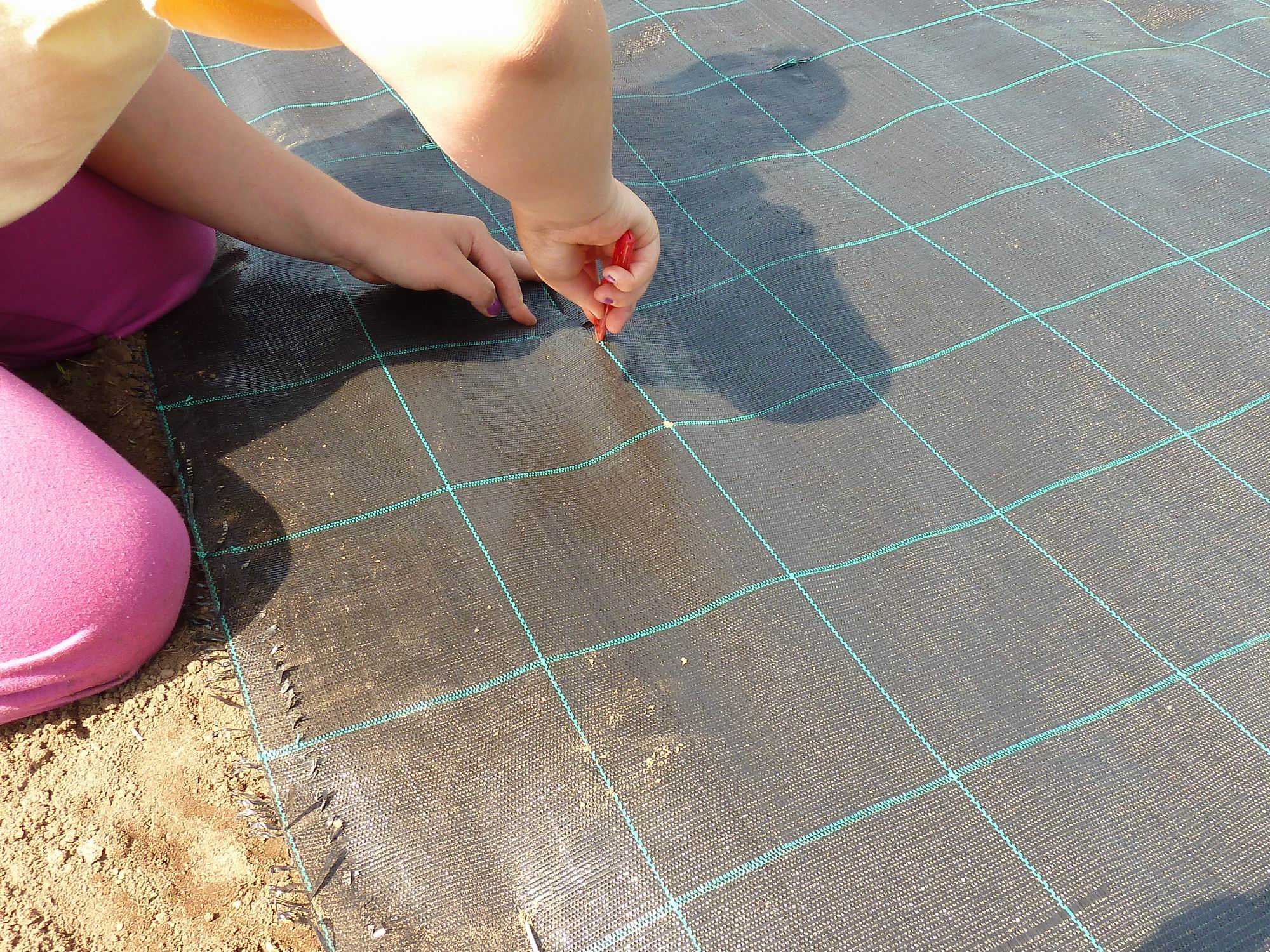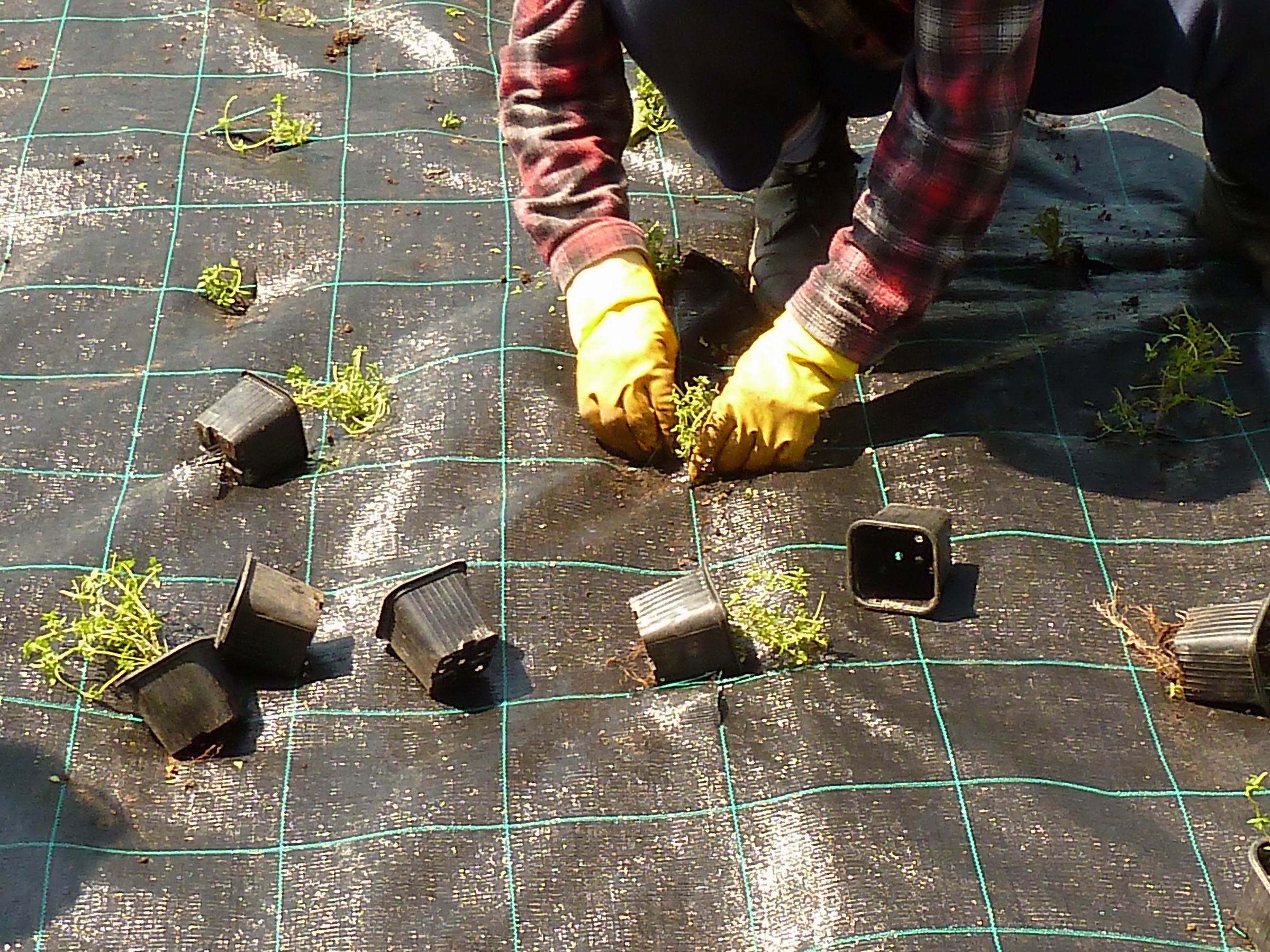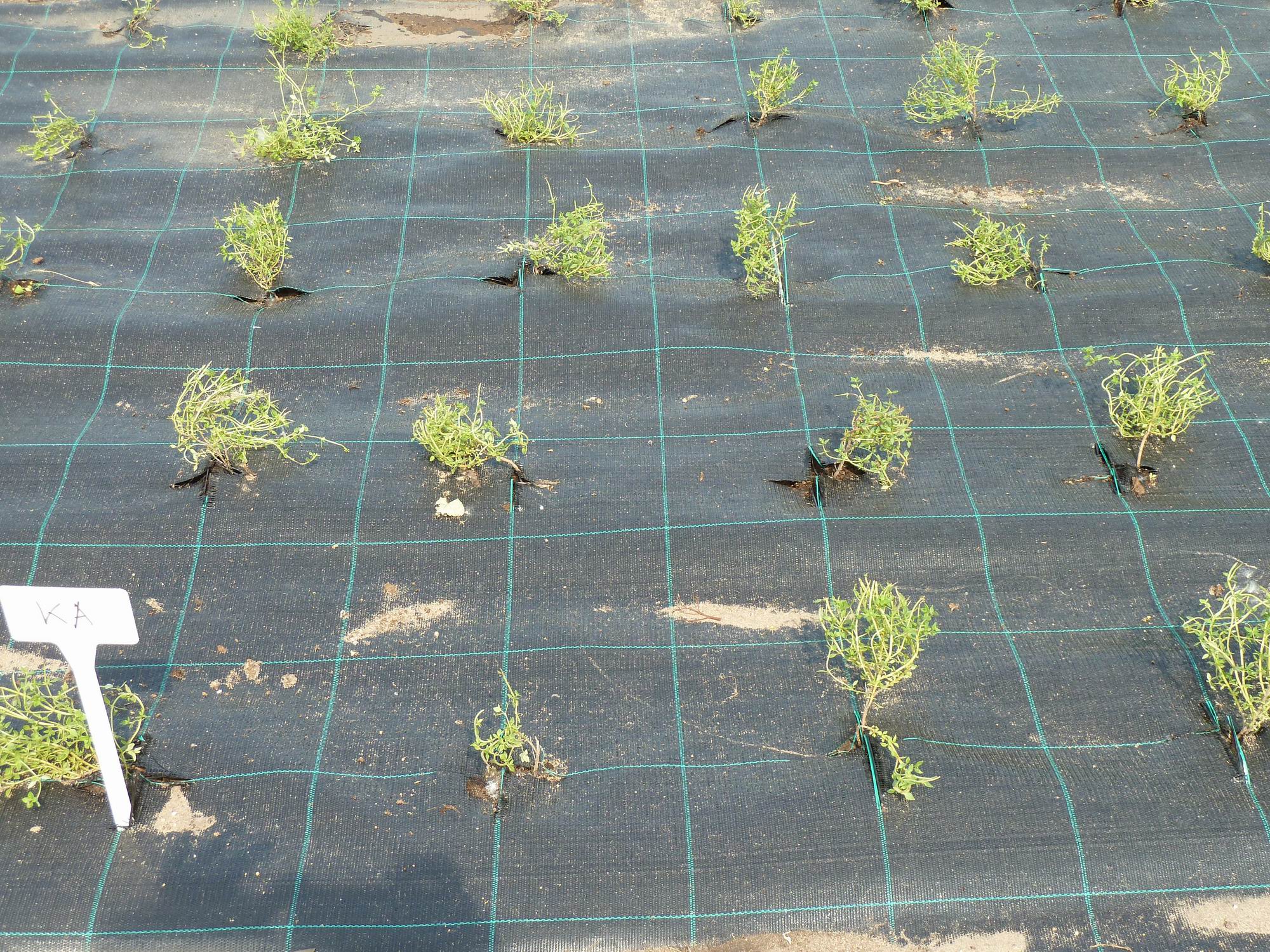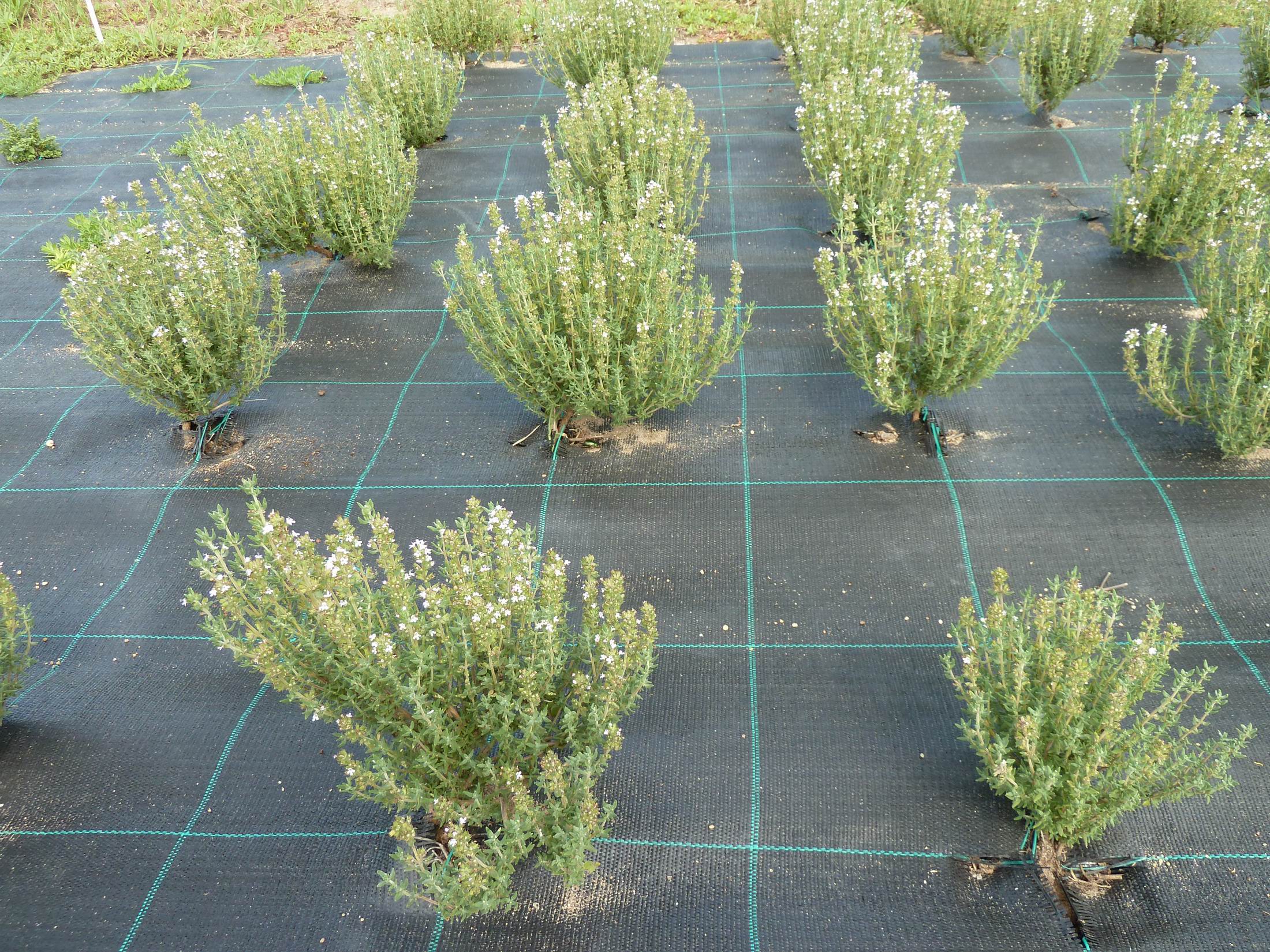Propagation technologies Applied in medicinal plant cultivation
Authors: Zsuzsanna Pluhár and Beáta Gosztola
Propagation methods applied in medicinal plant production
Introduction
Most of the cultivated medicinal and aromatic plants are herbaceous and capable to produce organs (seeds, fruits, rhizomes, stolons, bulbs, corms, etc.) suitable to sexual (generative) or asexual (vegetative) propagation. Sub-shrubs of Mediterranean origin of woody perennial habit (lavender, thyme, sage, etc.) are also widely grown, which can be reproduced by seeds or by vegetative organs, if reasonable.
Economic considerations have primary importance in the case of propagation, as the costs of propagation material can be rather significant within the whole growing input. If the market tendencies are favourable, however, the return of these high expenses can be achieved with profitable production, especially in the case of long cultures. The annuals are usually propagated by seeds and the utilization of direct sowing is preferred from economic point of view.
In spite of the high expenses of propagation material, it may ensure several advantages to cultivation, which are manifested in good utilization value of seeds, certainty of germination or rooting, high yields, constant crop quality, etc... The number of medicinal plant varieties is quite low if compared with other field crops, thus, cultivar name is only indicated in certain cases on the labels of propagation materials.
Widely used propagation methods in medicinal plant production
Plant propagation is the process, which is aimed at creating a new generation of plants from a variety of sources: seeds, cuttings, bulbs and other plant parts. Similar to the other horticultural crops, generative, or vegetative organs can be used for propagation (macro-propagation) or regeneration of in vitro reproduced plants (micro-propagation) is also applicable in some cases.
The place of propagation can be the field (direct sowing, seedling growing, layering, etc.) or a protected place (seedling growing, rooting of cuttings, etc.).
Nutlets used for propagation of sage (Photo by Pluhár, 2012)
Half-ripe stems of rosemary used to make cuttings (Photo by Pluhár, 2011)
Seed sowing
Seeds are small embryonic plants produced from sexual reproduction, being suitable for rising a new generation of plants. As there is a probability of genetic recombination, plants grown from seeds have different characteristics from their parents. The propagation method using seeds or fruits is called seed sowing.
Seed germination is a process by which a seed embryo develops into a seedling. It involves the reactivation of the metabolic pathways that lead to growth and the emergence of the radicle and plumule. The emergence of the seedling above the soil surface is the next phase of the plant growth and is called seedling establishment.
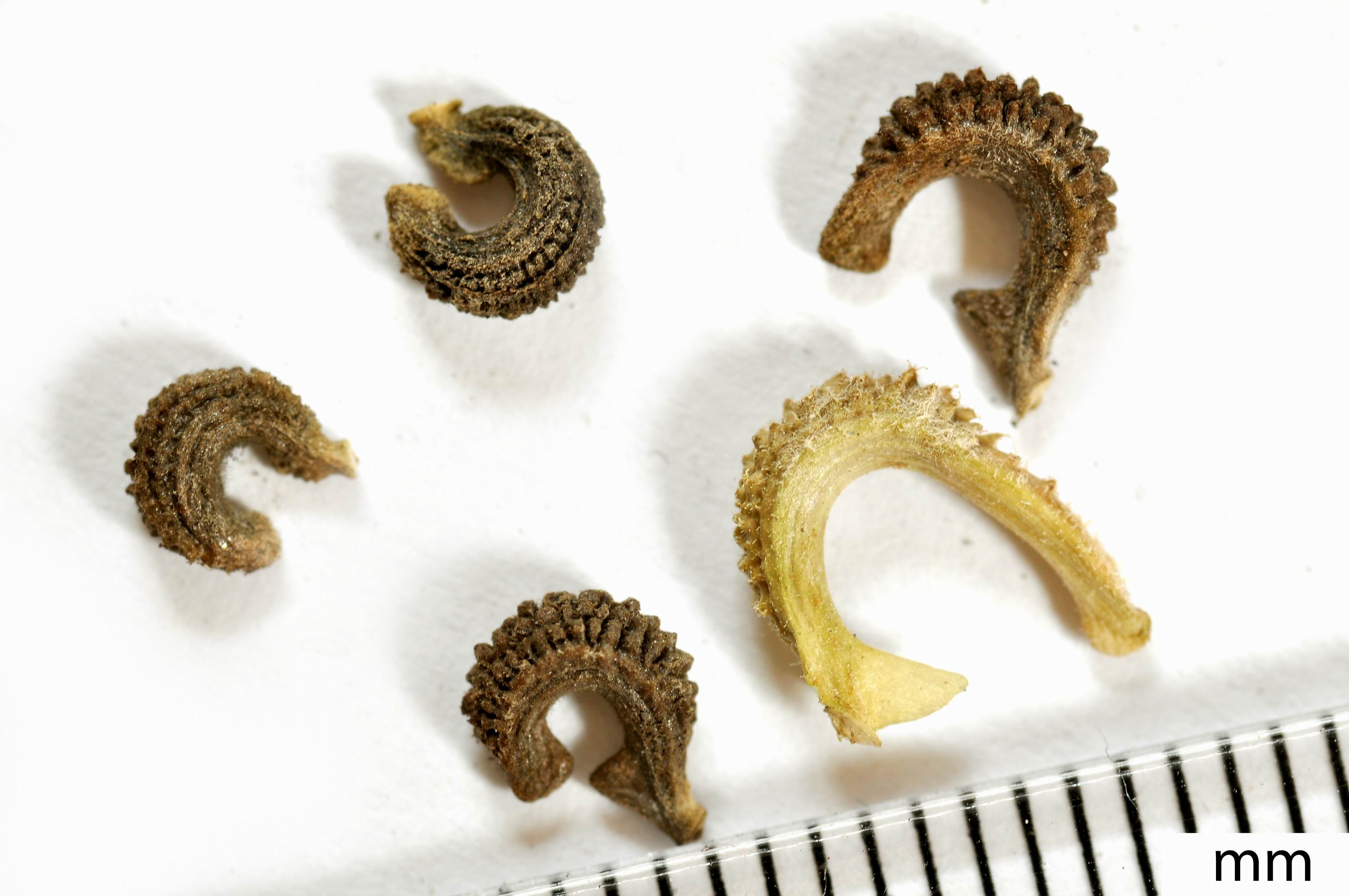
Ungraded achenes of marigold (Source: zh.wikipedia.org)
Properties of certified seed
Seed vigour measurements involve testing the viability of seed, the germination percentage and rate as well as the strength of the seedling produced. Germination percentage and rate are affected by seed viability, dormancy and environmental effects that impact on the seed and seedling. In agriculture and horticulture certified seeds have high viability.
The seed utilized for propagation possess by characteristics specified in official standards in national level. Seed testing and certification systems are developed and seed production is inspected by national authorities.
Quality parameters of certified seeds are as follows: species and variety identity, purity, germination capacity, thousand seed weight (TSW), grading and moisture content. These are all important with respect to the success of sowing. Grading of seeds (Class I., II., etc.) is based on seed testing norms.
Utilization value (Uv) shows the mass ratio (m/m%) of applicable seeds indicating the percentage of valuable (normal, healthy and viable) part of the seed item influenced by purity % and germination % as follows:
U v = (purity % x germination %) x 100 -1
Seed demand for sowing is calculated on the basis of quality parameters (purity %, germination rate%), 1000 seed weight and the required seedling rate per hectar.
Seed treatments
Many plants produce seeds with varying degrees of dormancy, and different seeds from the same fruit can have different degree of dormancy. A number of different strategies are used by horticulturists to break seed dormancy. Scarification allows water and gases to penetrate into the seed, include methods that physically break the hard seed coat or soften them by chemicals (soaking, rubbing, cracking, etc.). Stratification or moist-chilling is a method to break physiological dormancy and involves the addition of moisture to the seeds so they imbibe water, then the seeds are subjected to a period of moist chilling to after-ripe the embryo. Sowing outside in late fall and allowing to overwinter outside under cool conditions is an effective way to stratify seeds, as some seeds respond favourably to periods of oscillating temperatures of the natural environment. Leaching or the soaking in water removes chemical inhibitors preventing germination. Further methods are used to assist in the germination of dormant seeds, including pre-chilling, pre-drying, light exposure, potassium nitrate, gibberrellins, cytokinins, sodium hypochlorite and others.
In order to promote germination rate and seedling growth, preparatory operations on seeds are needed at certain medicinal plant species. The following seed treatments are generally used to induce germination of herbs, if necessary:
-
Treatments breaking seed dormancy
-
Pre-soaking: is used when seed coat is impermeable: e.g. Hypericum
-
Use of growth regulators : pre-treatment of seeds by soaking in hormone (e.g. GA3) solutions of different concentrations (e.g. lavender, species of wild origin).
-
Abrading: in the case of seeds with hairs or appendices (e.g. annual caraway)
-
Plant protection treatments :
-
Disinfection by plant protection agents: seeds are coated by a coloured film layer (e.g. anise seeds)
-
Preventive defence against damping-off and wilt of seedlings (e.g. Hypericum)
-
-
Seed irradiation at poppy seeds, to avoid the task of the manual labour-intensive thinning.
Little Hypericum (St. John’s Wort) seeds of hard and impermeable seed coat require presoaking prior to sowing (Photo by Pluhár, 2012)

Anise seeds covered by coloured layer of plant protection agents (Photo by Fazekas, 2012)
Direct sowing
Sowing is the process of planting seeds. The purpose of sowing can be direct propagation or rising of seedlings for further planting. Seeds are frequently coated or treated by pesticides, thus their appearance (colour, size, etc.) may differ from the natural shape, which should be considered before setting the sowing machines.
Direct sowing is the most widespread, simple and economic method for propagation of medicinal and aromatic plants, especially in the case of mechanized large crops (e.g. poppy, caraway), though, frequently applied at labour-intensive small crops (pl. pot marigold) as well, if economical.
The most important aspects of sowing are the optimal sowing time, depth, type and pattern, which should also be considered in the course of seedling growing.
The optimal time of open field sowing is determined by the soil structure, weather conditions and the thermic demand of seed for germination. An earlier and deeper sowing is possible in the case of loose, sandy soils, which warm up easily, if compared with heavy soils. Concerning weather conditions, soil temperature and moisture content as well as the period of late frosts of the region are to be considered.
Typical sowing periods of medicinal and aromatic plants are as follows:
-
Late summer (late Aug – early Sept): chamomile
-
Fall (Sept-Oct.): winter poppy
Final soil preparation procedures can be timed to the planned sowing time as well as suited for the seed characteristics and ecological demand of the medicinal plant.
Soil preparation for sowing by combinator (Békésszentandrás, 2012) (made by Fazekas Gy.)
Determining factors of sowing depth are seed size, light demand and duration of germination as well as soil structure. In seeding, little if any soil is placed over the seeds (seedbed sowing), where the covering soil is approximately 1.5-2 times thicker than seed size. The seed can be uncovered at the surface of the soil, when light is necessary for germination, such in the case of chamomile and valerian. Duration of germination may also influence the depth of sowing longer germination requires thicker coverage to avoid desiccation. Generally, deeper seedbed is necessary on loose soils of low water capacity
Several sowing patterns exist these including diffuse sowing, sowing in single or double drill as well as grid and stripe sowing. In the latter case, seeds are placed into stripes of 4-6 cm. According to plant-to-plant density within rows, one may apply dense or precision drilling.
In medicinal plant cultivation, most seeds are sown using seed drillers, which offer greater precision, as seeds are sown evenly at the desired rate. The driller also places the seeds at a measured distance below the soil, so that lower amount is required. Rows are 12-48 cm apart, depending on the crop (e.g. anise, dill, coriander, caraway, poppy, milk thistle, etc.) and growing conditions. Several row opener types are used.
The seed rates vary considerably depending on the species, soil conditions and farmer’s preference. Excessive rates can cause the crop to lodge, while too thin rate will result in inadequate utilization of the land, competition with weeds and reduction in the yield. Covering is made in the course of sowing.
xxxxxxxxxxxxxxxxxxxxxxxxxxxxxxxxxxxxxxxxxxxxxxxxxxxxxxxxxxxxxx
Video 4.7. Anise seed sowing by pneumatic driller (Békésszentandrás, 2012) (made by Fazekas)( gyogy4.7.mpg )
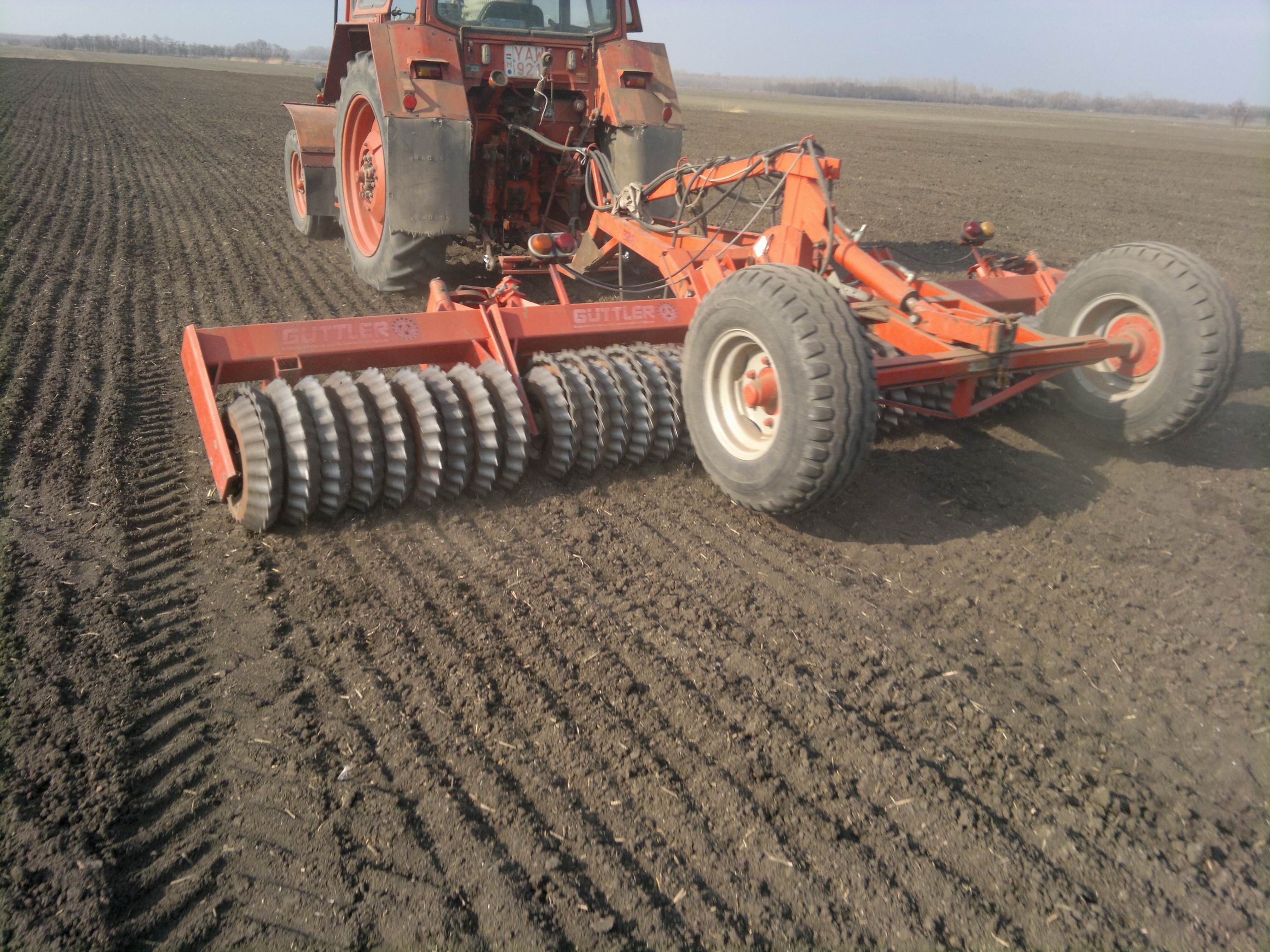
Seed covering by Güttler roller (Photo by Fazekas, 2012)
In some cases, multiple cropping systems are applied, when sowing mixed seeds together using an associate plant species (intercropping) (e.g. biennial caraway with the annual dill). The advantage of intercropping is that the grower can harvest the annual crop already in the first year, when the biennial species is only in an earlier developmental stage.
Transplant (seedling) growing
In transplant growing seeds are not sown directly to the growing site but under a covered or protected place and with higher density. However, open field seedling growing technologies are applied at several medicinal plants (lavender, sage, valerian, etc.) as well.
The advantage of this technology is that favourable climatic conditions are provided for initial growth of seedlings, thus, earliness of crop can be achieved. The procedure is cost effective at the very beginning, when only small surfaces are occupied by large amount of seedlings. Further benefit derives from the lower seed requirement if comparing with the direct sowing, as the germination is promoted under protected places.
Among disadvantages, higher probability of quick dispersal of diseases can be mentioned because of dense sowing as well as hand touching of seedlings in the course of pricking out.
Plastic tunnel without heating used for transplant growing (Photo by Pluhár Zs., 2011)
Duration of transplant growing in protected cultivation is usually 4-12 weeks, while in open field 2-12 months. Exotic species (ginseng, ginkgo, etc.) may have longer (1.5-2 years) seedling growing periods because of weak germination of seeds and elongated early development.
Good quality of substrate used has primary importance in transplant growing, which can be ensured by utilization of artificial soil mixtures (propagation soil premixes) prepared specifically for purposes of propagation and promotion of early growth. The first step of soil preparation is pasteurization with steam or fumigation with chemicals. Nutrient supply is also applied by adding manure, mould, peat, etc., according to the nutrient demand of the seedling.
Seeds are sown into propagation trays, flats, soil blocks or other containers as well as into the seedbed prepared under the protected place. The soil premix is used to load the trays, blocks or containers prior to sowing by the grower. This is followed by initial water filling of the soil then fertigation of developed seedling is applied incidentally.
The method of sowing can be diffuse sowing or drilling by hand or machines to different sowing sites: ground, seed flat, seed tray, soil block, pot or container. Timing depends on the planting date, also considering the duration of seedling growing as well as climatic conditions, method of crop care and variety used. The sowing density can be dense (2-5000 plants/m2), normal (800-1500 plants/m2) or sparse (4-700 plants/m2). Dense sowing is used only in the case of pricked seedlings, while seeds are sown sparsely into soil balls, blocks or containers.
Dense sowing of basil seedlings in propagation flats (Photo by Pluhár Zs., 2011)
Transplants can be grown with or without pricking off. The advantages of pricking off are the uniformity of plants, branching roots allowing better survival after planting out and the small necessary growing site at the beginning. However, it requires a lot of manual labour, infection dispersal can be quicker, and some species does not tolerate the pricking off at all (e.g. gourd family-cucumber). The pricking off, if applied, should take place as early as possible: generally in the phase of two-true-leaf, with the distance of 5-10 cm, into containers or bed.
Those transplants grown without pricking off can be planted out with soil balls to the field. The following types of growing exist: in soil blocks, seed trays, seed flats, pots or in containers. This method is advantageous, as roots of seedling are covered by soil and not damaged during transplanting. Wide variety of seed trays or containers can be used fitting in size to the target plant species. In this case, substrate serves as a starter fertilizer containing all the necessary nutrients for young plants. These seedlings can be transplanted by machines easily and uniformly, as no significant differences occur among plants in shape. However, the whole procedure is quite expensive, as all the processes are controlled and mechanized from sowing to planting out.
Transplant growing in seed trays is a completely automatic procedure, where filling, sowing, plant care, transport and planting out are all mechanized. The tray size varies between 0.18-0.25 m2, while cell size in diameter can be 18-60 mm. Peat, soil mixture, rock wool and other substrates are used to fill the trays.
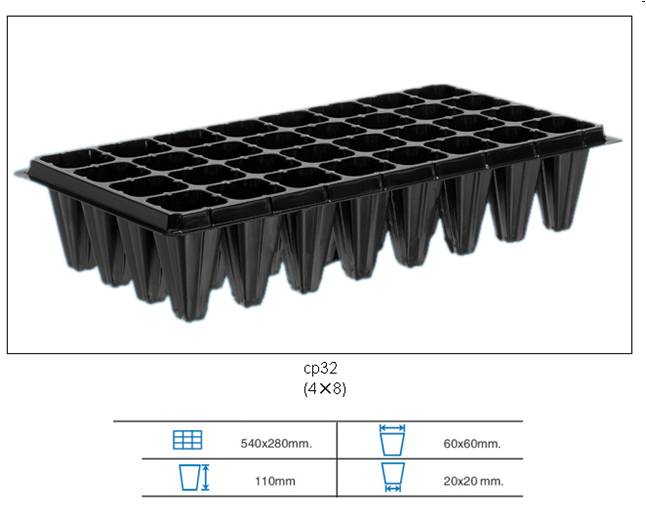
Seed tray utilized for transplant growing
Black coloured plastic pots of square shape (diameter: 5-14 cm) are preferred for transplant growing in pots. This method is beneficial in keeping moisture of the soil, in ease of transport and capability for complete automatization in larger farms.
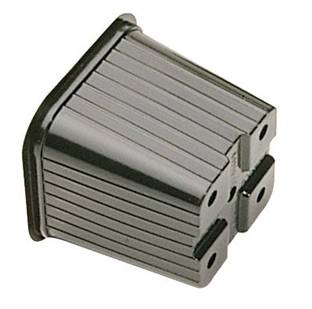
Container applied (a) and basil transplants in pots (b) (Photo by Pluhár, 2011)
Seed flat is applied for sowing before pricking, for pricking and for propagation by cuttings. Substrate is determined by the purpose of utilization and depends on the specific ecological demands of the plants propagated. Size of seed flat is 59 x 29 x 7 cm. Seed flats are sometimes covered by a glass plate after sowing, in order to keep moisture for the emergence of very little seedlings.
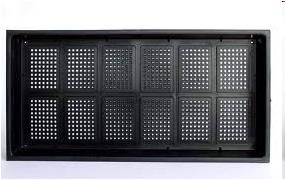
Seed flat utilized for different propagation purposes (Photo by Pluhár, 2011)
Transplant growing in open field is an extensive but widespread method at medicinal plants, especially for propagation of lavender, sage and valerian. Duration of seedling growing can be 2-12 months. Smaller plant density (20-25 cm row distance) is applied than in field cultivation of the same crop. These areas of propagation should be irrigated and fertile. The technology is partly mechanized but requires significant manual labour as well. Sometimes soil is covered by mulching to promote germination of seeds. Plastic mulching or manual weed control is necessary to keep the soil clean in the spacing between rows.
Open field transplant growing of true lavender (Photo by Pluhár., 2011)
The aim of plant care used during transplant growing is to satisfy ecological demands of young plants perfectly. Specific temperature, watering, light and fertilization regimes have been developed for cultivated medicinal plant species. In general, from sowing to emergence, optimal temperature is kept at +7 oC higher than usual beside favourable soil moisture content. During seedling development until the appearance of true leaves, -7 oC lower temperature than normal demand is to be maintained, to avoid elongation of hypocotil.
Concerning light regimes, shading or supplementary artificial lighting are used if necessary. Water supplying or refreshing irrigation are applied, where the evenness is an important factor. Water demand can be decreased by mulching. In general, supplementary irrigation with a weekly rate of 5-20 mm fulfils the requirements of seedlings. The sufficient nutrient supply can be preset by mixing fertilizers to the propagation substrate or by fertigation by complex fertilizer solution during seedling development. Weed control can be manual or chemical and mechanic in open field transplant growing.
Acclimatization of indoor seedlings to the outdoor conditions until planting them out to the field is very important. As a general rule, a 10-12 days training under the shade is necessary to prepare the transplants. In the case of thermophylous species a short dehydration phase, while at hydrophylous cold tolerant species, a cold treatment is applied. In the course of conditioning, watering of 10 mm and complex fertilizer supply is proposed, 8-10 hours before planting.
Characteristics of the mature seedling are as follows: roots filled the soil in the cell of the container but they are still white and possess by a short hypocotil and 5-6 mature leaves.
Training of developed transplants before planting out to the open field (Photo by Pluhár, 2011)
Vegetative propagation technologies
For vegetative (asexual) propagation, developed plant organs are used (=vegetative propagation or cloning). The new individuals are identical to the original (parent) plants.
Vegetative propagation methods of medicinal plants are as follows:
Propagation by stem cuttings, using
-
Hardwood cuttings (willow)
-
Softwood cuttings (mint, tarragon, sea buckthorn, vanilla)
Layering
-
Ground layering: tarragon, hybrid lavender, thyme
Division
- Offshoot isolation (mint, tarragon)
-
Propagation by underground organs
-
Rhizome division (ginger)
-
By stolons (mint)
-
By side-bulbtubers (corms) (saffron)
-
Vegetative propagation by cuttings
In the case of propagation by cuttings, a piece of the source plant containing at least one stem cell (stem, root, leaf) is isolated and rooted in a suitable medium separately.
Among its types, green or softwood cuttings are made in May and June, when the central vascular bundle is separated from the other tissues in the green shoots. Their average length is 5-7 cm with at least 2-3 leaves. Mint, tarragon, sea buckthorn and vanilla can be propagated by softwood cuttings.
Semi-ripe or half-wood cuttings are prepared in the period of July-September, when the apical part of the stem is unripe but the basal zone is already woody. Its length is 6-15 cm in average and prepared by cutting or tearing them from the twigs. We have to ensure overwintering of rooted half-wood cuttings under coverage. Lavender, garden thyme, rosemary and black pepper can be propagated by this method.
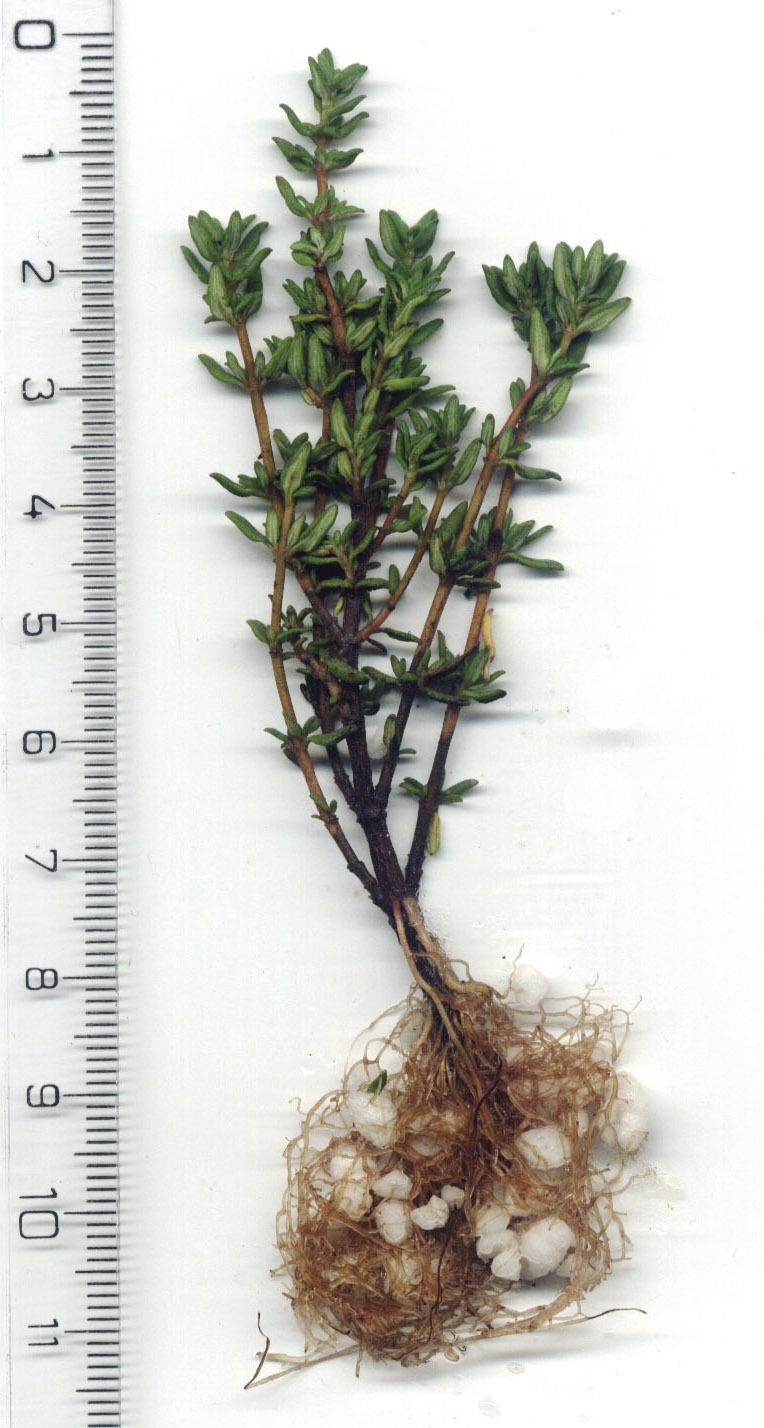
Half-wood thyme cuttings in trays using perlite as rooting medium (a) rooted thyme cutting (b) (Photos by Pluhár, 2011)
Half-wood rosemary cuttings in the course of rooting (a) and potted after rooting (b) (Photos by Pluhár, 2011)
Hardwood cuttings can be made from November to March by using hardened woods after defoliation but in frost-free periods with the average length of 20-30 cm. They are cut 1-2 mm under the lower node and 1-2 cm above the upper node. Hardwood cuttings are buried immediately to the soil or stored after tying. Willow can be rooted easily in open beds by hardwood cuttings but it is a promising method for sea buckthorn too.
Appropriate, healthy source plants are needed for successful cutting production. Seed flats or trays are filled with specific rooting medium (soil, perlite, sand, rock wool, peat, a mixture of them, etc.) prior to slipping the cuttings into it. Rooting hormones (e.g. indole-3-butyric acid) are applied before putting cuttings into the substrate, in order to promote root development. Intensive conditions are necessary during rooting, including moist medium, humid environment, partial shade and favourable temperature, which can be ensured in greenhouses and plastic tunnels.
Hardwood cuttings of white willow rooted in open field beds, during sprouting in spring (Photo by Pluhár, 2011)
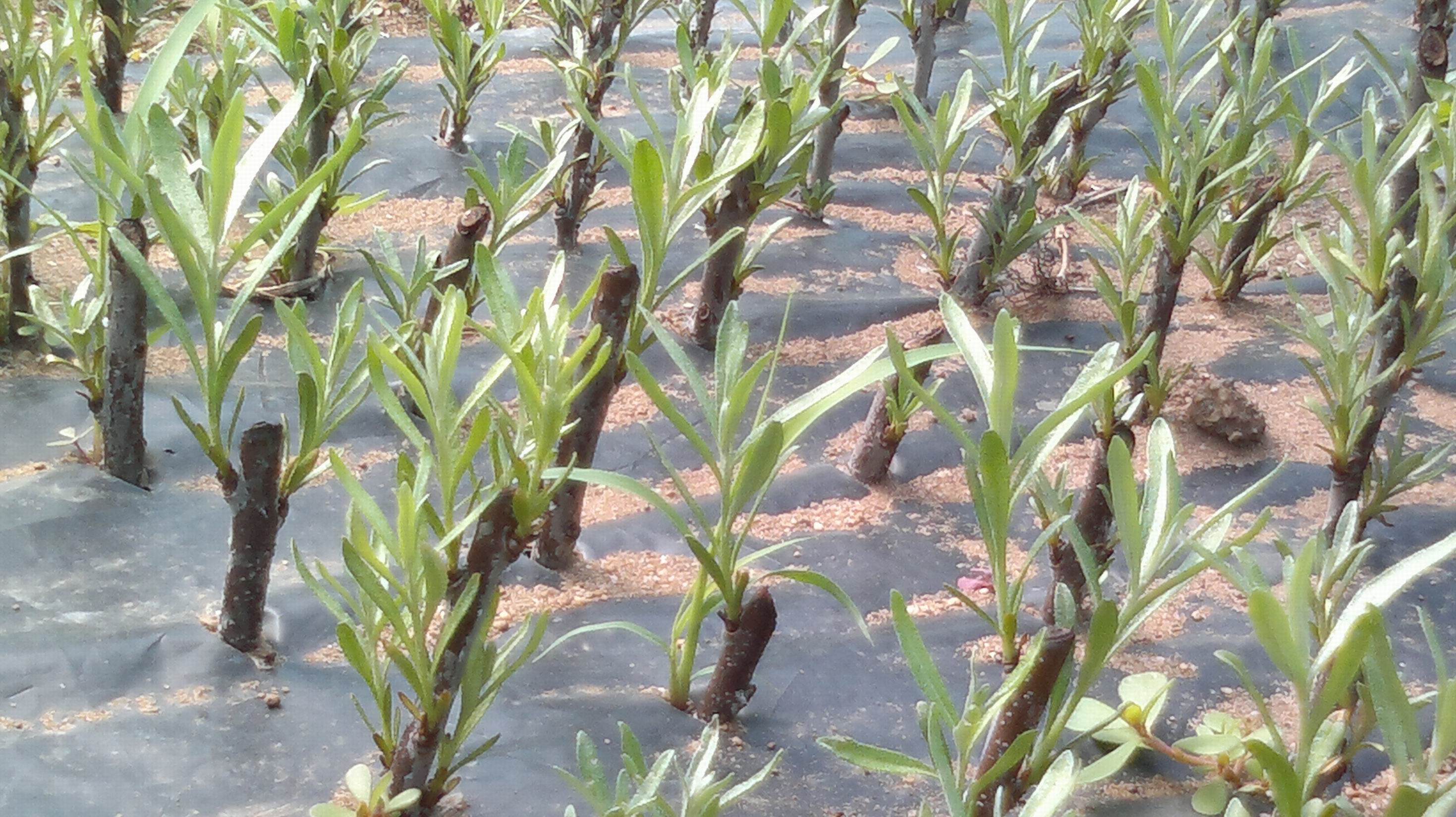
Rooted cuttings of sea buckthorn in sprouting (Photo by Pluhár Zs., 2012)
Layering
In the course of layering, aerial stems are used for propagation, being attached to the parent plant during rooting (1/2-2 years). After the period of development of adventitious roots, rooted stems can be detached from the source plant, and used as an independent plant.
Several advantages of the procedure can be considered: it is an economical asexual propagation method because neither special rooting conditions nor particular tools are required. Regarding source plant, its aboveground parts can be utilized for various purposes (e.g. essential oil extraction) during root development. However, the process is rather slow and provides weak propagation rate.
Ground layering is the most widely used method, when a marked parent plantation is applied for propagation. Among medicinal plants, this method can be utilized at tarragon, lavender and thyme. The first procedure is the banking up of parent plants with soil to promote root development under the soil coverage. The height of banking up depends on the plant habit: in the case of lavender, thickness of soil layer is 30-40 cm; while that of the thyme is 20 cm. Uncovering and detaching rooted branches are due after rooting. Planting out is necessary immediately after detaching them into a well-prepared soil, followed by watering.
Ground layering procedure of garden thyme: a. mother plant as banked up; b. detached branches with adventitious roots; c. planting material; d. uncovered mother plant used previously for propagation; e. clone originating from ground layering (Photos by Pluhár, 2011)
Plant division
Division is a vegetative propagation method used at plants multiplying themselves by modified stems, stolons, offshoots or runners. The reproduced new individuals possess individual upright shoots and roots, therefore are suitable for separation from the parent plant (e.g. mint, tarragon, aloe). Further propagation methods with underground parts (rhizome, bulb, corm, etc.) are also involved.
Establishment of a healthy, identical parent population is indispensable in the case of plant division as well. Root offshoots are isolated around the mother plants carefully, without injury. Immediate planting out into the field, then watering are necessary. In the case of mint, the optimal time for propagation with offshoots is due in May.
Peppermint offshoots right after planting out (Photo by Pluhár, 2011)
Certain medicinal and aromatic plants are propagated by division of modified underground shoots (rhizomes, stolons, side-bulbs, etc.). In some cases, vegetative propagation by these underground parts is the only possible and economical mode of reproduction.
Peppermint and spearmint are generally propagated by stolons. Stolon is a specialized type of horizontal above/underground shoot, a colonizing organ that arises from an axillary bud near the base of the plant. Stolon is longer and thinner than rhizome, having strong tendency to form adventitious roots at the nodes. Types of mint stolon are white (pigment-free) underground and red, above-ground antocyan coloured stem.
Establishment of parent stand for propagation of mint species is due in October of the preceding year. The optimal row spacing here is 0.8-1.0 m. Utilization of pesticides is not allowed. Banking up of rows by soil of 5-8 cm is done after the first cut of the aboveground shoots (in July). Second harvest is performed in October, then the stolons are lifted by using potato harvester. After soil preparation of the fields, stolons are laid down into 10 cm deep trenches, where the row spacing is 50-60 cm. Casing by soil and watering are applied immediately after planting of stolons.
There is no seed formation at the triploid saffron (Crocus sativus), therefore, only vegetative propagation is possible by division of small corms (bulb-tubers). In Asia and in the Mediterranean, major producers cultivate saffron in an annual cycle, thus, corms are lifted up every year to divide side-corms (1-2 cm). Corms are planted into beds in August, using density of 20 x 8-10cm and depth of 8-10 cm.
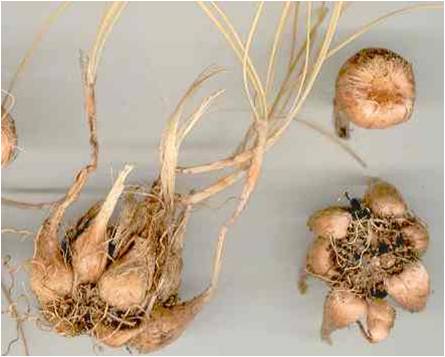
Corm structure of saffron used for propagation (Source: http://www.itmonline.org/articles/saffron/saffron.htm )
Ginger (Zingiber officinale) can be vegetatively propagated in tropical regions by rhizome segments of 20-25 g, after a period of forcing which indicates sprouting. Ginger is cultivated in plant beds filled with humus enriched soils, where plant density of 20-25 x 20-25 cm is applied. Rhizome segments are placed into the soil at a depth of 4-5 cm.
In vitro propagation
Definition and characteristics of micropropagation
Micropropagation is a manipulation performed in organ level. It is a kind of asexual propagation method, which is carried out by the utilization of vegetative or generative organs, tissues of plants under in vitro, sterile, controlled conditions. In vitro (in Latin: "in glass") expression indicates, that the process is going under controlled, artificial conditions and not in natural environment. During micropropagation new, intact plants are produced, which are completely identical genetically with the mother plant. These new individuals created from one of the organs, a piece of organs or only one cell of the parent. Thus the new plants don’t develop from fertilized ovum, zygote, but from somatic cells (cloning).
The primary condition of successful micropropagation is that plant cells, tissues used for propagation (explants or inocula) will be meristematic. The appropriate growing medium, optimal physical circumstances (light and temperature conditions, airspace of culture bottles, and length of cultures), the surface and endogenous sterility are also crucial in terms of successful breeding process. In the course of micropropagation the plant parts separated from mother plant (most frequently buds, shoot tips, leaves and leaf fragments, flower buds) are placed on culture medium, where shoots are regenerated from them with the help of different hormones. Then regenerated shoots are multiplied or their elongation is induced. Later the multiplied shoots are separated, while the elongated shoots are cut into pieces at every nodus. Finally these are rooted putting on new culture medium. The last step is acclimatization (rooted plants’ accustoming to external environmental conditions).
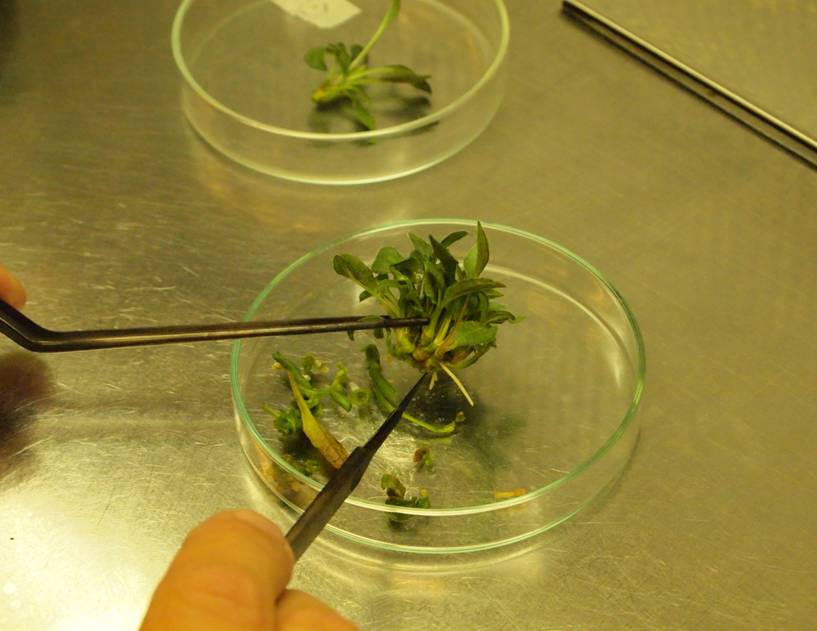
Figure 4.23. Separation of multiplied shoots ( gyogy4.23.jpg )
Figure 4.24. Cutting into pieces of elongated shoots at every nodus ( gyogy4.24. avi) VIDEO
Figure 4.25. Putting of chopped shoots on culture medium in order to rooting ( gyogy4.25. avi) VIDEO
The advantage of micropropagation is the high productivity, because applying this method results in multi-million increments which can be achieved annually from only one individual, and descendants will be completely the same as the mother plant. In addition, much less mother plants must be maintained for it than in case of conventional vegetative propagation methods. So hybrid or genetically modified plants can be cloned by it too, which can’t be propagated successfully with other vegetative methods. It can be used for virus disinfection too because this is the only vegetative propagation possibility when virus-infected mother plants can have virus-free progenies. A further advantage of micropropagation is that the production is completely independent from the season, climate, the age of the propagating plant or its infection’s degree, and the whole production process is well controlled, verifiable. But micropropagation has disadvantages too, such as it requires serious technical and professional background and it is quite expensive. It has great practical importance mainly in case of those horticultural species, where plant individuals can be sold on high market prices (e.g. ornamentals, fruit varieties).
Possibilities of m icropropagation in medicinal plant cultivation
Micropropagation is used in medicinal plant cultivation too, however, it is applied only in case of those species, which cannot be propagated generatively (or only with difficulties) and their conventional vegetative propagation methods are also problematic (e.g. medical speedwell). In practice, this propagation method is used primarily at the cultivation of such perennial species, which are able to produce a value (during longer time), that can cover their higher investment expenses (e.g. aloe species or black elder). In the case of 'Haschberg' variety of black elder (Sambucus nigra) there are woody cuttings and micropropagated nurslings in commercial trade, where micropropagated material costs 100 HUF more than cuttings. But this extra cost will pay off later, because micropropagated individuals grow more vigorously and have approx. 20-30% higher yield than plants propagated in a conventional way. Foreign organic farmers increasingly employ micropropagated seedlings, because besides several benefits (e.g. these are pathogen-free and completely homogeneous, etc.), their price is also reasonable (hardly more than the price of bio propagation materials produced in a conventional way). In case of potted aromatic herbs and medicinal plants with ornamental value (e.g. lavender, sage, hyssop, mint species, etc.) which can be sold at higher prices, micropropagation can also be a perspective. But in respect of plantations established for drug-producing micropropagated seedlings are too expensive to use (at least for the present). In addition, micropropagation may affect the active agent content of medicinal plants too, whose effect and extent are very variable by species.

Essential oil content and components of Salvia fruticosa in vitro and in vivo
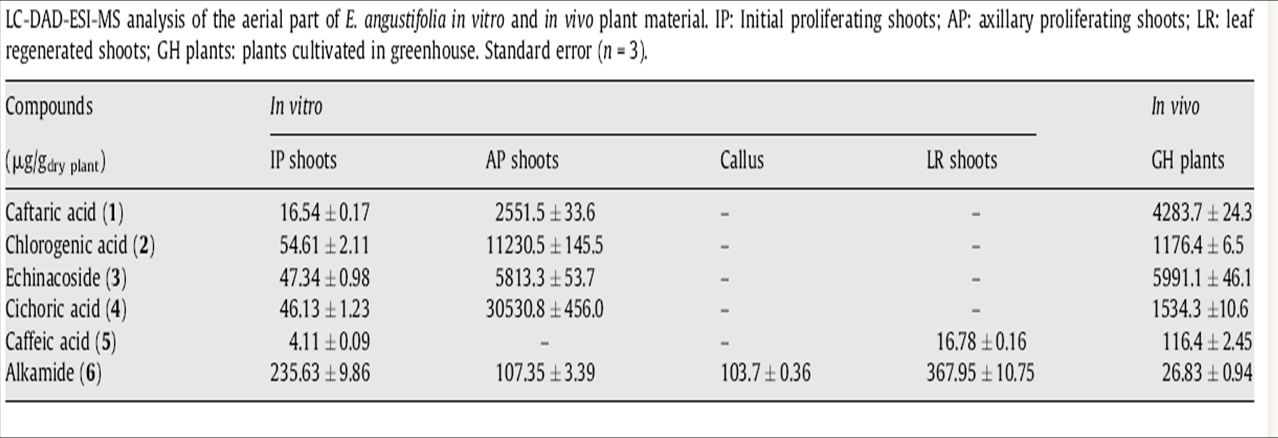
Accumulation of caffeic acid derivatives and alkamides in the aerial part of Echinacea angustifolia in vitro and in vivo
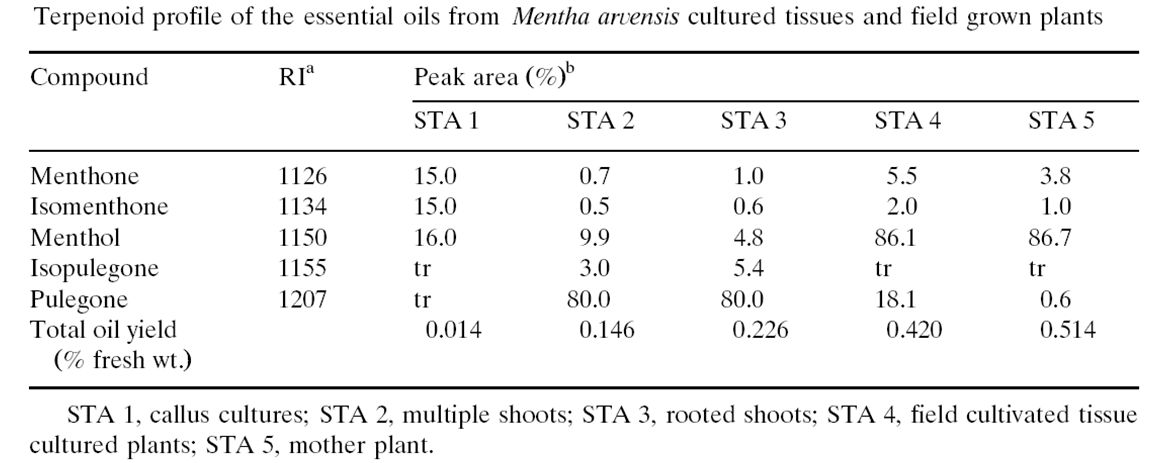
Essential oil content and composition of Mentha arvensis in vitro and in vivo
On the other hand in the course of medicinal plants’ breeding micropropagation becomes increasingly important, because it can accelerate the breeding process significantly. Perspective plant materials, genetic assortments can be quickly multiplied under sterile conditions and by in vitro cloning of selected, high-performance individuals large amounts of homogeneous lines and strains can be produced. It is very often used for fast multiplication of new varieties.
Establishment of Medicinal plant fields
Introduction
Medicinal plant fields can be established by the above mentioned propagation methods: direct sowing or transplanting of young plants reproduced by seeds (seedlings) or vegetative organs (cuttings, rooted offshoots, stolons, corms, rhizome segments, etc.). Transplants raised by protected cultivation are to be prepared for planting out to the open field by acclimatization. Prior to replanting, transplants are stored for a shorter or longer period followed by a mechanic or hand planting. In the case of open field grown transplants, preparation procedures of seedlings for planting include: lifting from the ground, batching and putting into pits till planting. Prior to the realization of bedding, roots and shoots of transplants are usually cut back, then loaded into the planting machines or disposed to the field for hand planting.
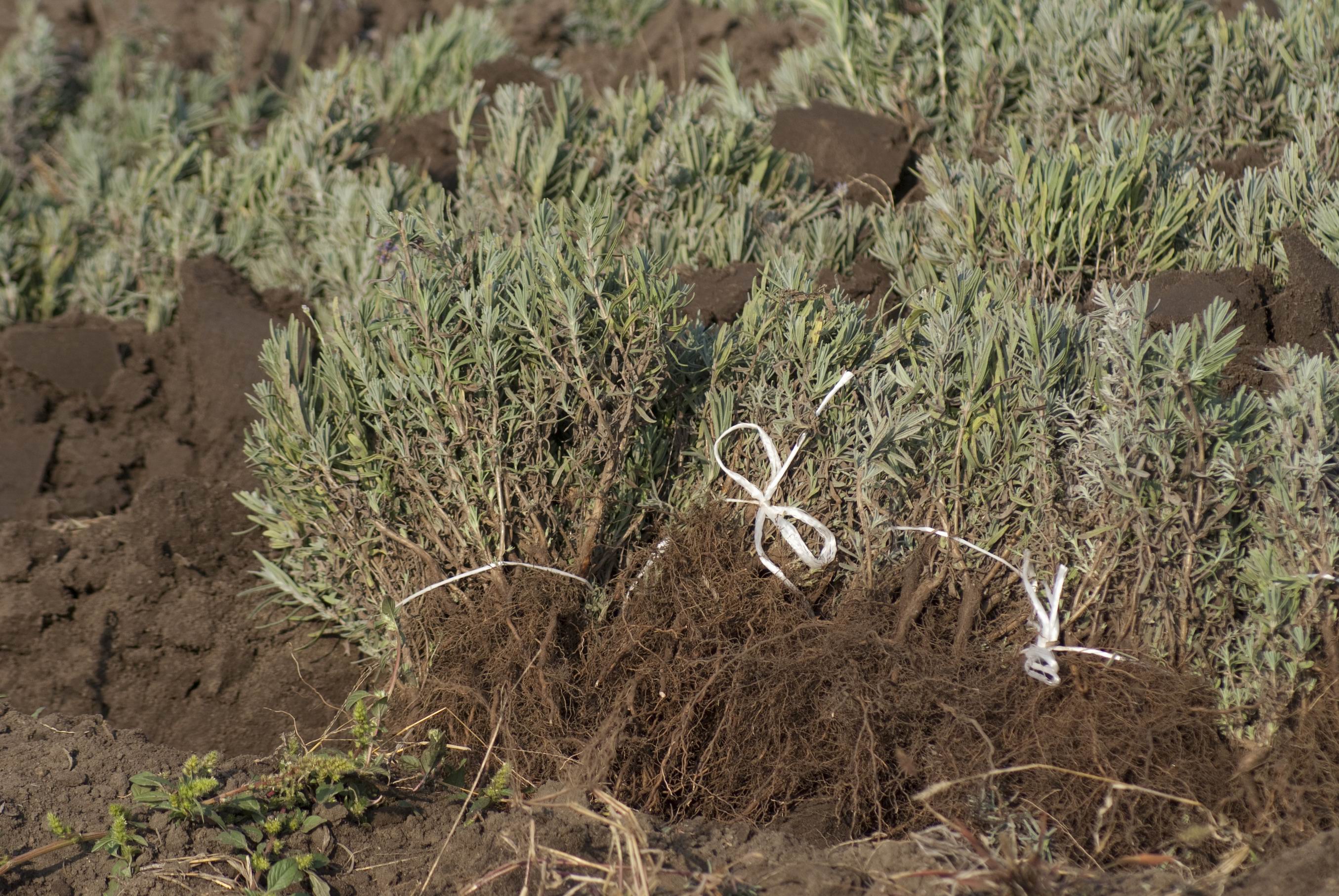
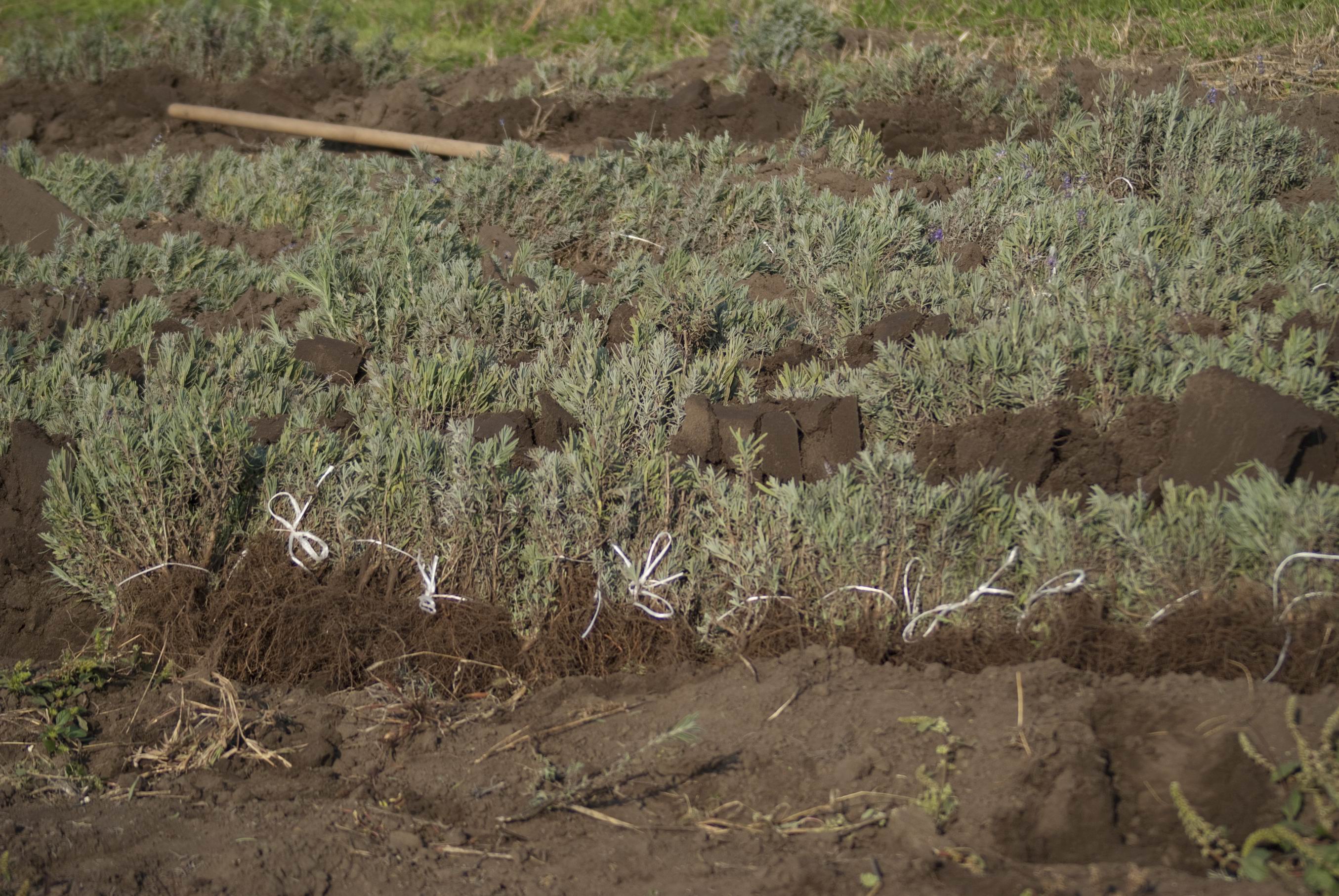
Lifted open field grown transplants of lavender in batches (a) and put in pits (b) (Photo by Pluhár, 2008)
Timing of planting out is determined by thermo-demand of the species and the weather conditions. Late spring frosts are considered when planning spring bedding. The whole technology of transplant growing should be timed to the optimal specific planting period.
The following bedding periods are applied in Hungary:
-
In spring : generally after late spring frost, in May
-
Rooted offshoots: tarragon, mint
-
In Autumn:
-
September: rooted cutting of hybrid lavender, seedlings of sage
-
Plant spacing, planting sheme
Plant spacing is the area for a plant calculated by multiplication of row spacing (cm) and plant-to-plant distance (cm), expressed in cm2 or m2 (e.g. 50 cm x 40 cm= 2000 cm2).
Plant density is the number of plants calculated for unit area (m2 or ha) (e.g. 5 plants/m2), while planting sheme means the distance and pattern of rows and plants.
Planting sheme can be:
-
Irregular (at diffuse sowing)
-
Row cultivation
-
Stripe cultivation: one row is skipped after 3-5 rows, in order to leave space to the tires of the tractor.
Perennial lemon balm stand with plant sheme of even rows (Photo by Pluhár, 2008)
Significance of plant density
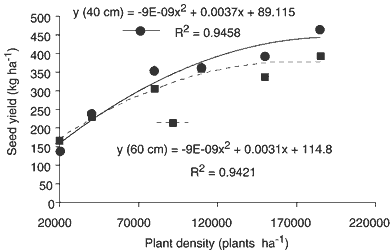
Correlation between plant density and crop yield in the case of field production of borage ( Borago officinalis L.) in Chile (Source: http://www.hort.purdue.edu/newcrop/ncnu02/v5-501.html
Plant densities applied in the case of medicinal plants are as follows:
-
Row spacing used in the course of direct sowing
-
Row spacing applied for bedding transplants
-
50-60x30-40 cm: tarragon, hyssop, lemon balm, mint offshoot
-
60-70x30-40 cm: St. John’s Wort, sage
-
100x50 cm: true lavender
-
150x60-100 cm: hybrid lavender
-
400x200-250 cm: sea buckthorn
Realization of planting out
Transplants can be bedded into the field by hand or by machines. Transplanting machines may operate with pincers, rotating bowls or rotating feeder. Modern transplanting machines (e.g. Due Manual Matic: Hortech, Italy) are very versatile because they can transplant young plants with bare root or with cylindrical, cubical, conical or square soil balls, blocks, modules, bulbs and all kind of plants including seedlings as well as nursery plants. It is possible to transplant and/or mulch (plastic or biodegradable film, cellulose) at the same time. Insecticide and fertiliser distributors are also among accessories of modern transplanting machines.
Supplementary procedures
Planting of rooted garden thyme cutting into soil mulched by agrotextile (Photos by Pluhár, 2011)
(a: laying down of agrotextile , b: hole making, c: planting, d: planted individuals, e: plant with shoots cut back, f: developed plants two months after bedding
Control questions:
Right answers
References
-
Anonymus (2011): Bodza: 800 ezer a bevétel! Haszon Agrár Magazin, 2011. június. http://www.haszon.hu/agrar/penzes-oetletek/672-bodza-800-ezer-a-bevetel-.html
-
Arikat, N.A., Jawad, F.M., Karam, N.S., et al. (2004): Micropropagation and accumulation of essential oils in wild sage (Salvia fruticosa Mill.) . Scientia Horticulturae, 100 (1-4): 193-202.
-
Balázs S. (1994): Zöldségtermesztők kézikönyve. Mezőgazda Kiadó, Budapest, p. 138-154.
-
Bernáth, J. (szerk.) (2000): Gyógy- és aromanövények. Mezőgazda Kiadó, Budapest
-
Bernáth J.- Németh É. (szerk.), (2007): Gyógy- és fűszernövények gyűjtése, termesztése és felhasználása. BSc tankönyv. Mezőgazda Kiadó, Budapest.
-
Czáka S.-Füstös Zs.-Hrotkó K. (2011) A növényszaporatás ábácéje. Mezőgazda Kiadó, Budapest, p. 59-86.
-
Jámborné B.E., Dobránszki J. (szerk.) (2005): Kertészeti növények mikroszaporítása. Mezőgazda Kiadó, Budapest.
-
Phatak, S.V., Heble, M.R. (2002): Organogenesis and terpenoid synthesis in Mentha arvensis . Fitoterapia, 73 (1): 32-39.
-
Santos-Gomes, P.C., Seabra, R.M., Andrade, P.B., Fernandes-Ferreira, M. (2002): Phenolic antioxidant compounds produced by in vitro shoots of sage (Salvia officinalis L.). Plant Science, 162 (6): 981–987.
